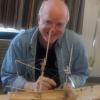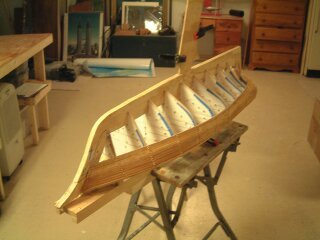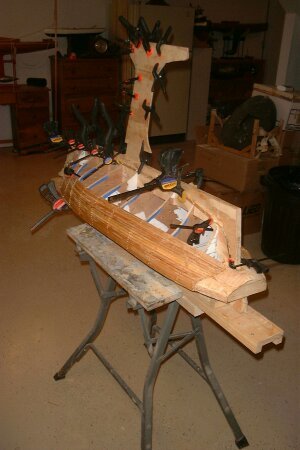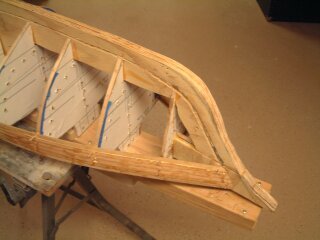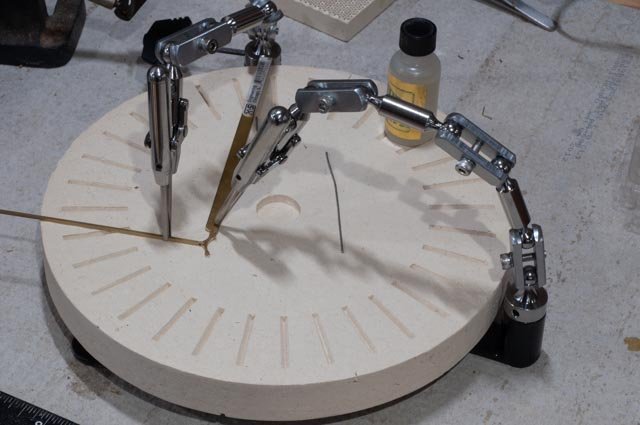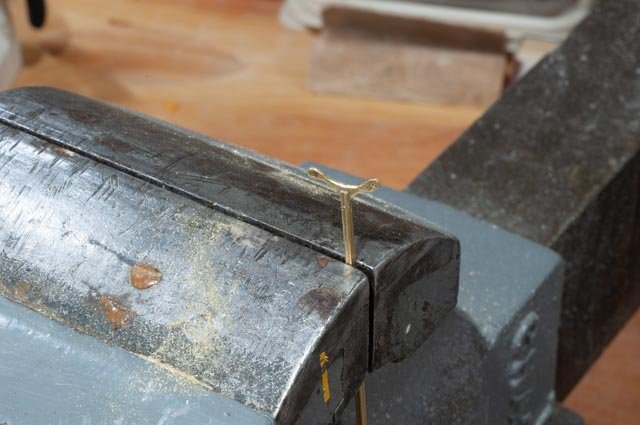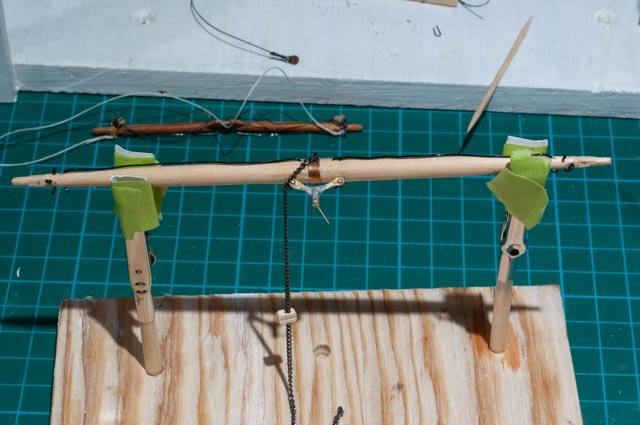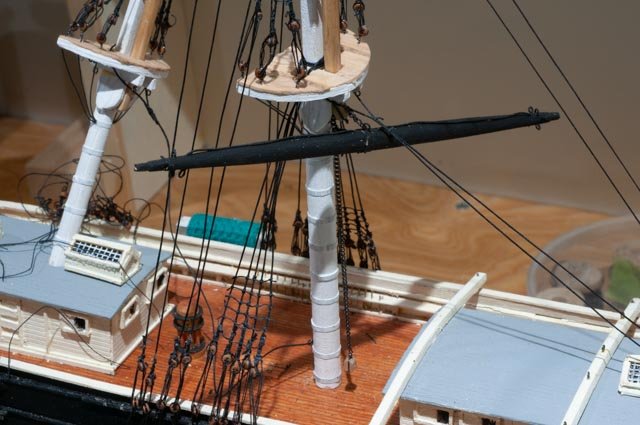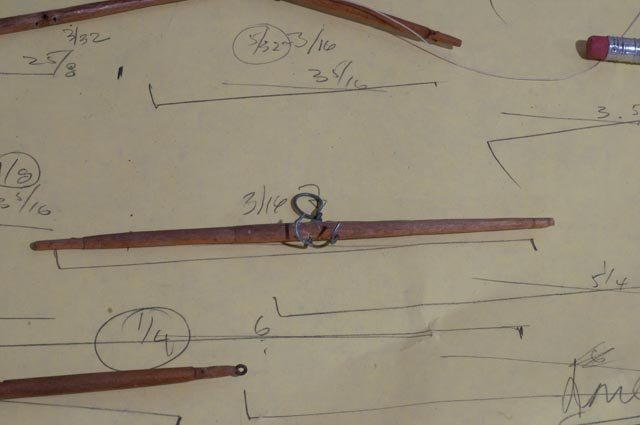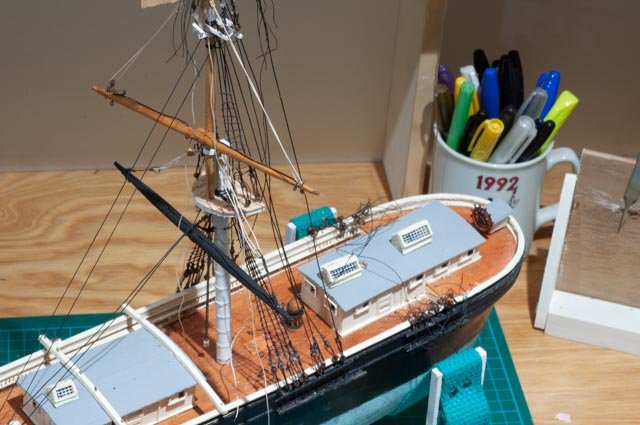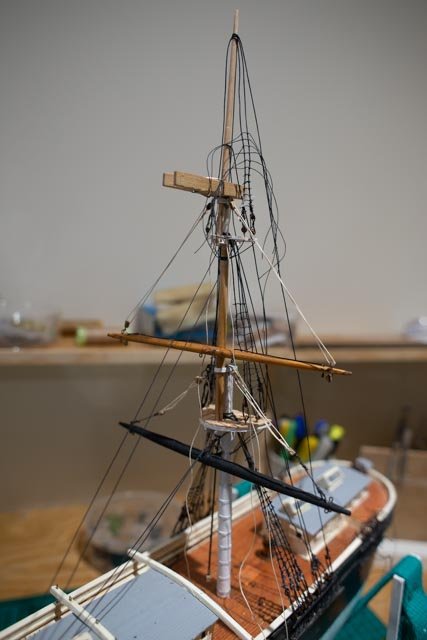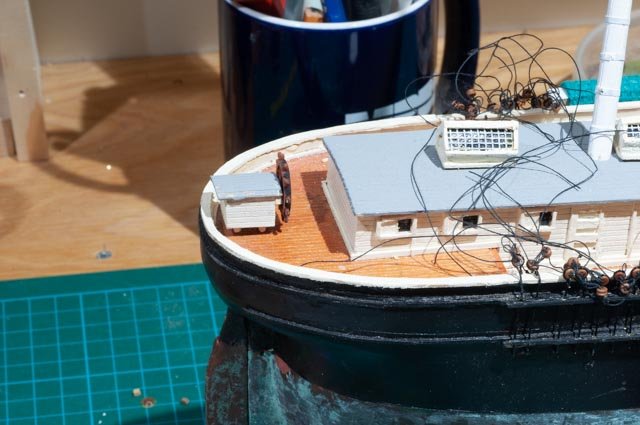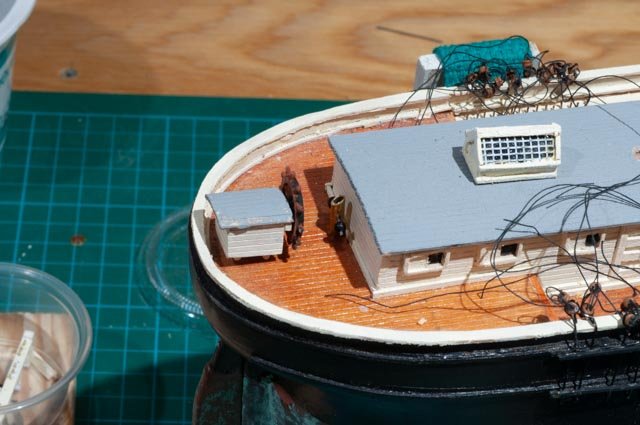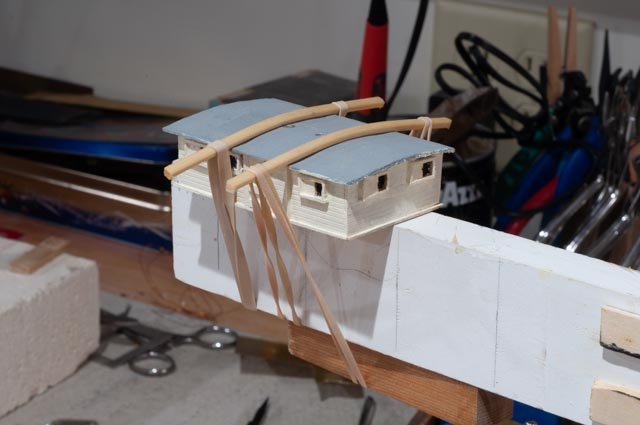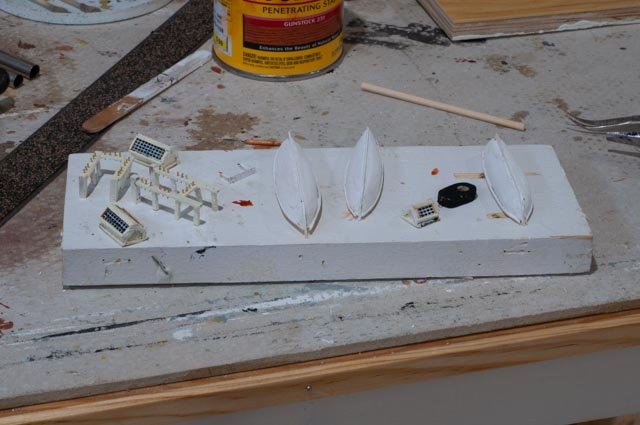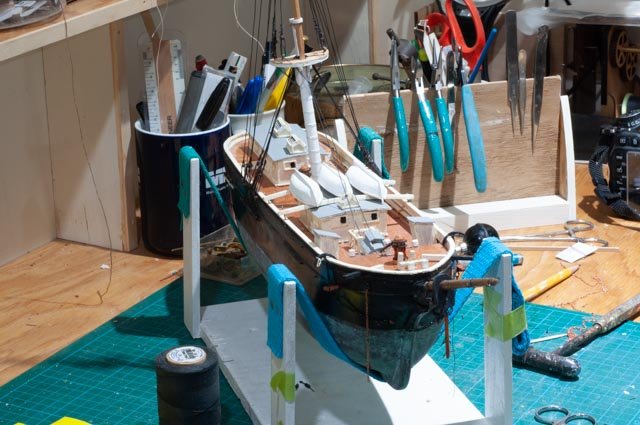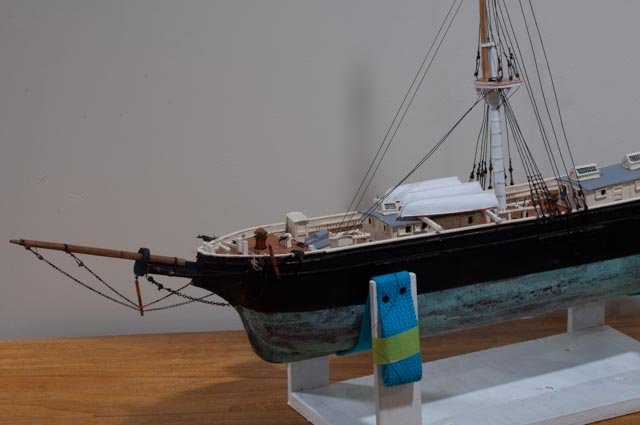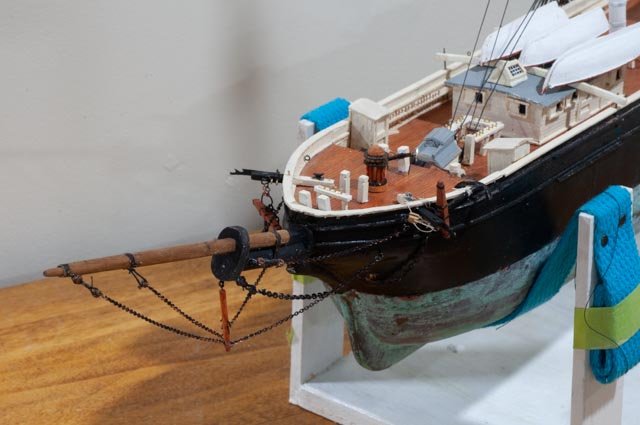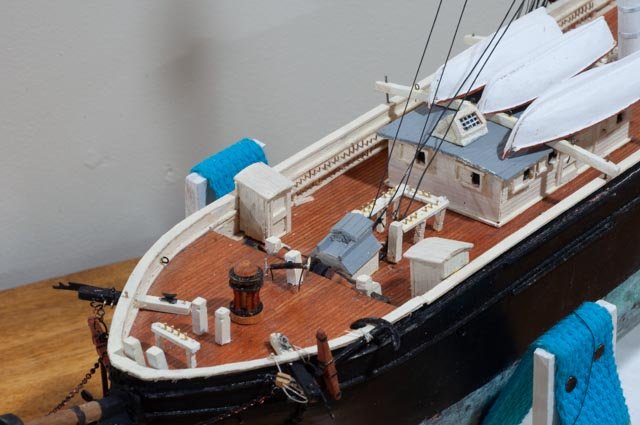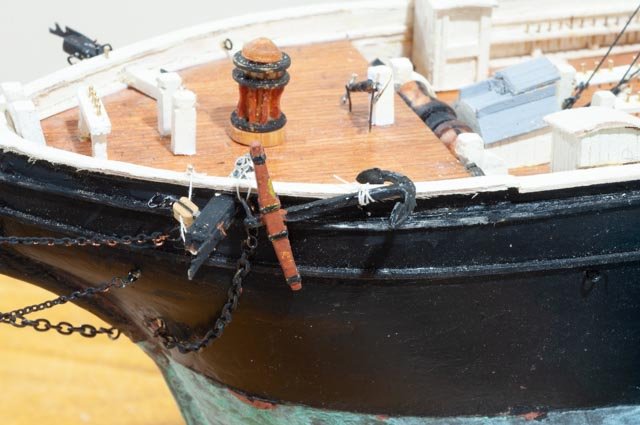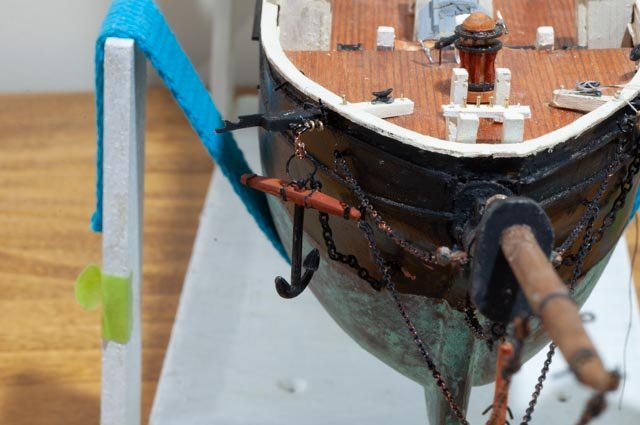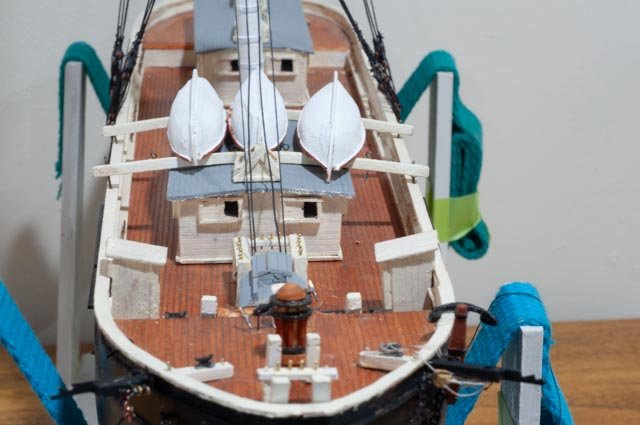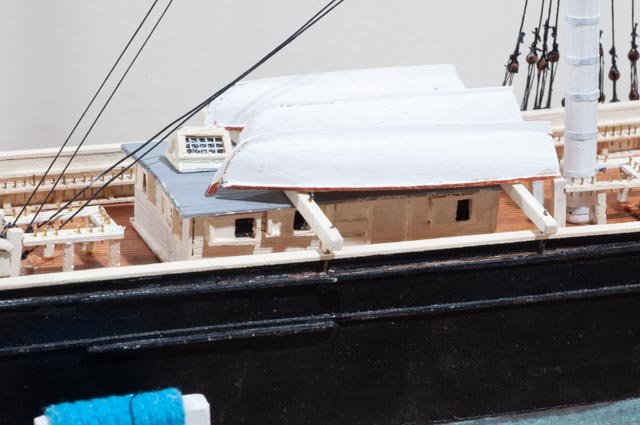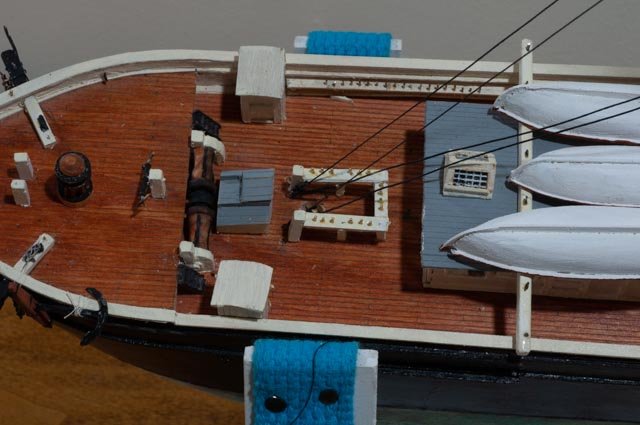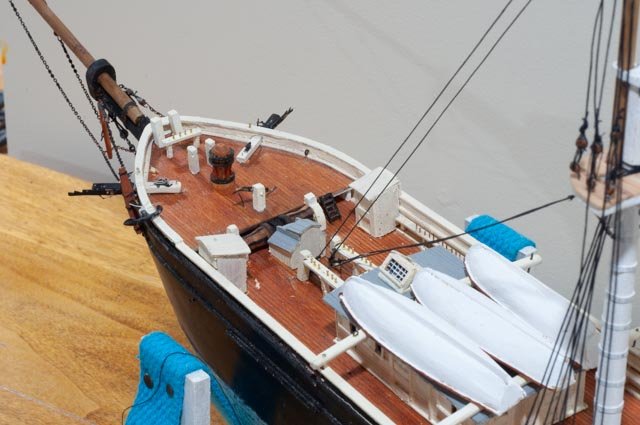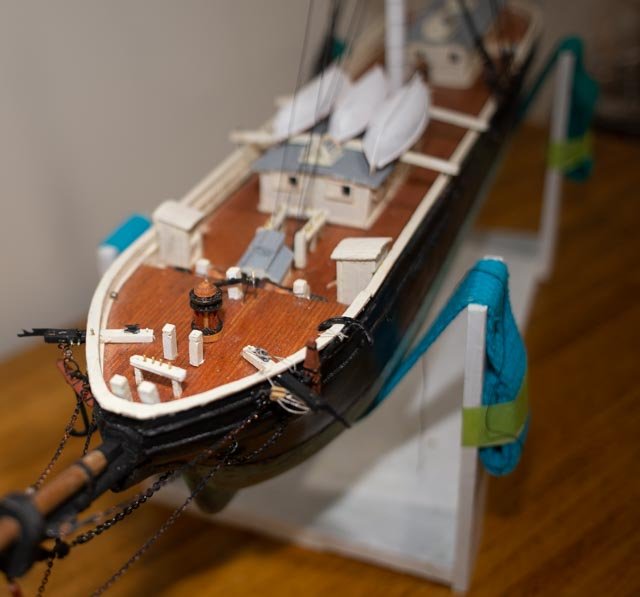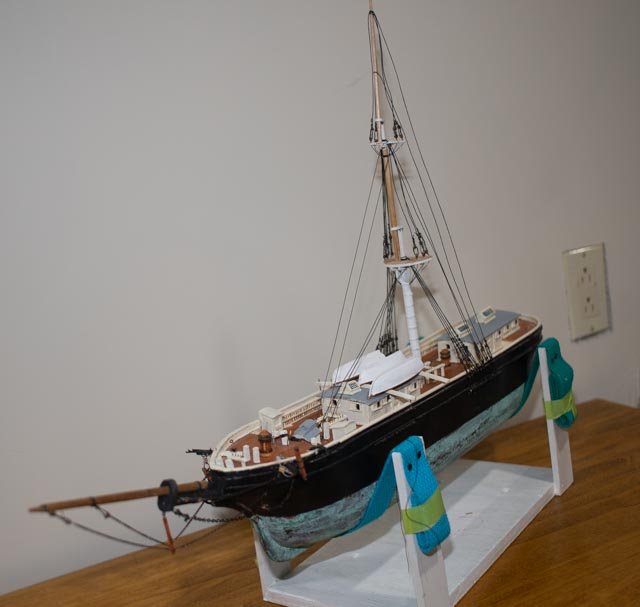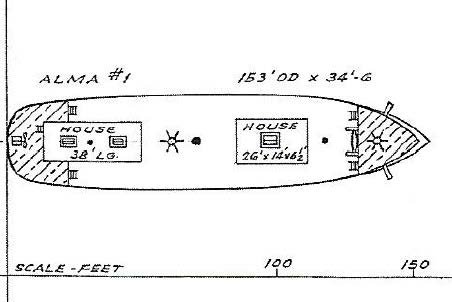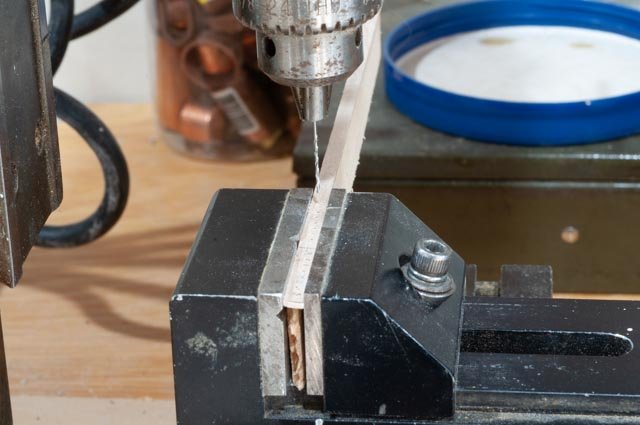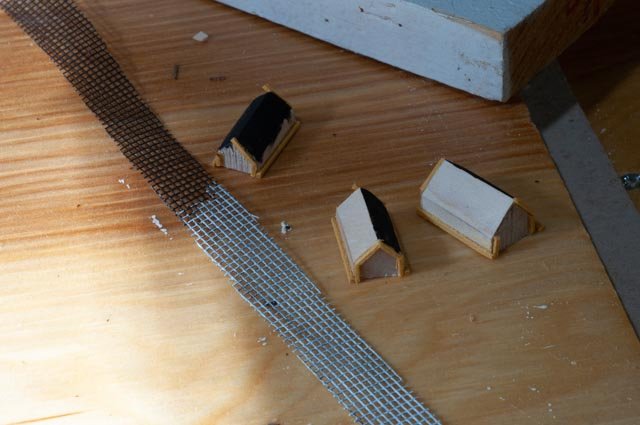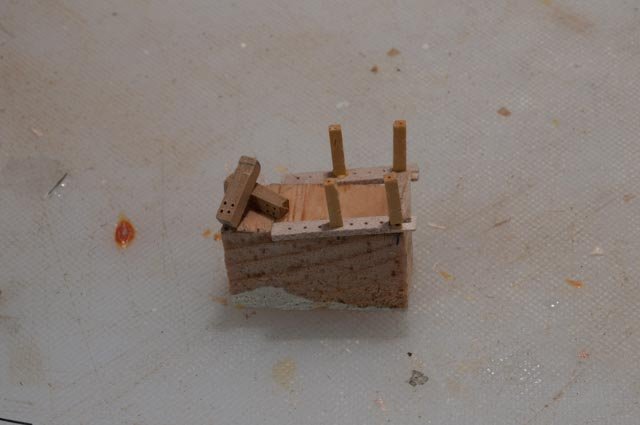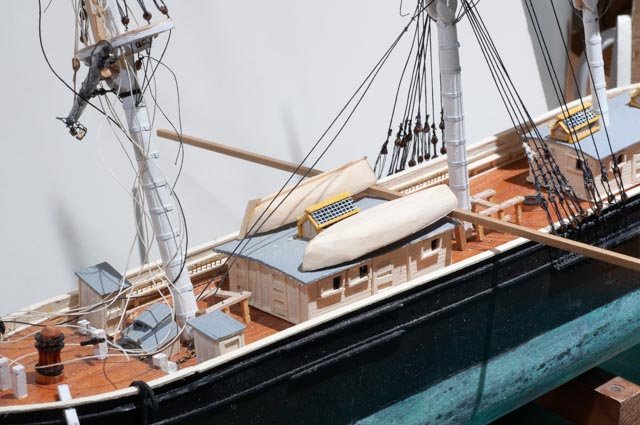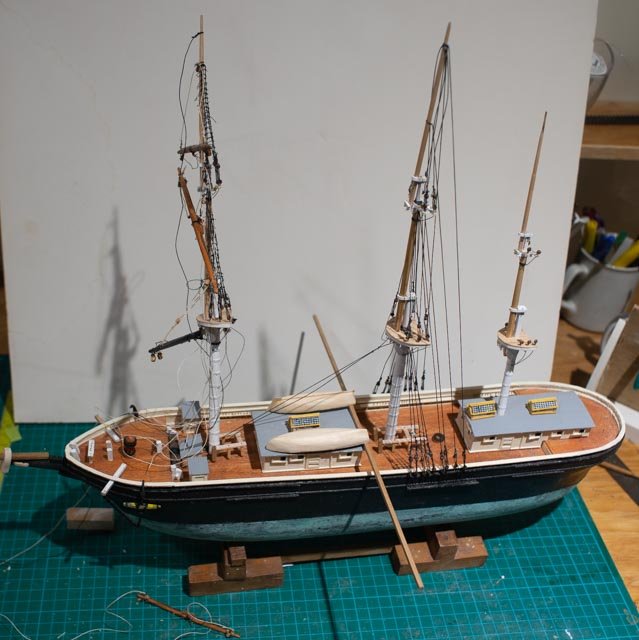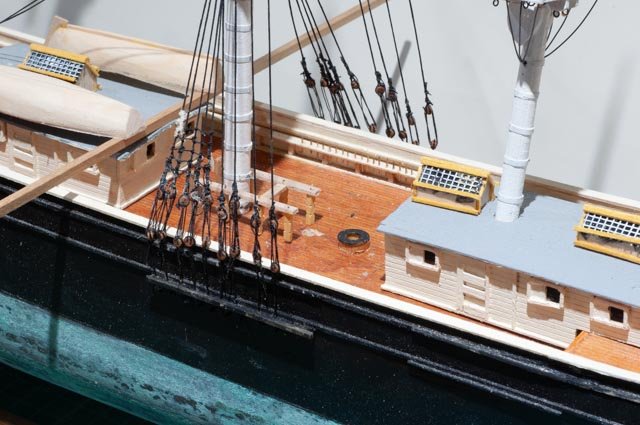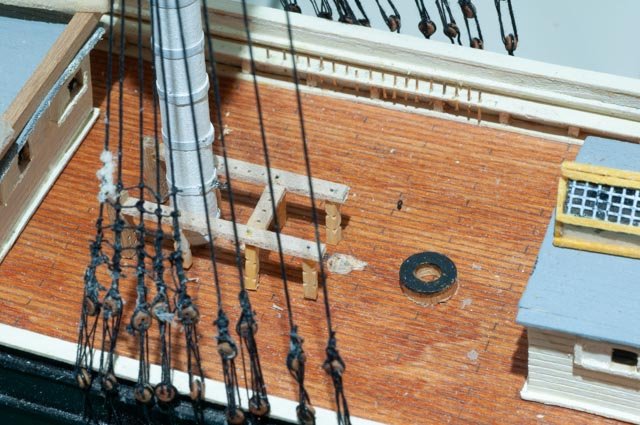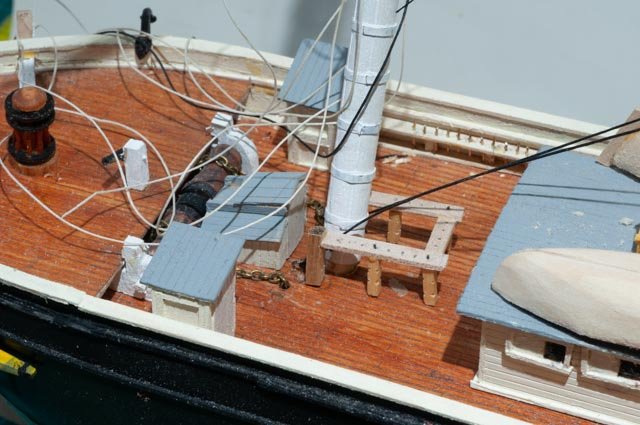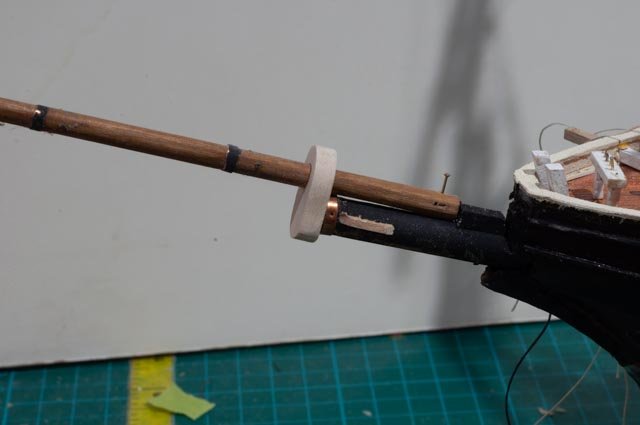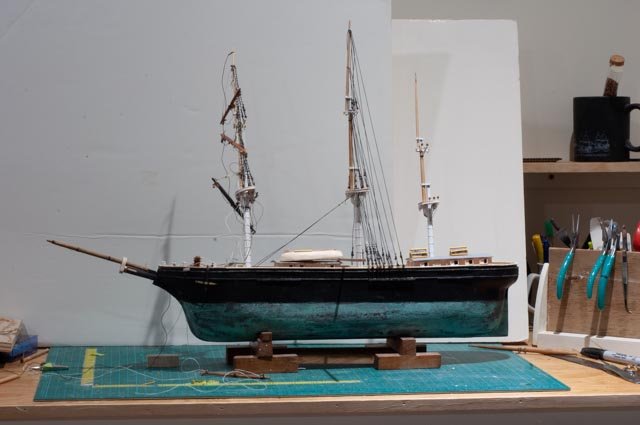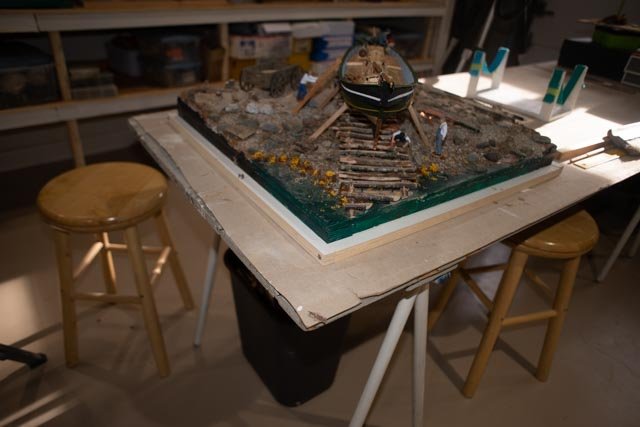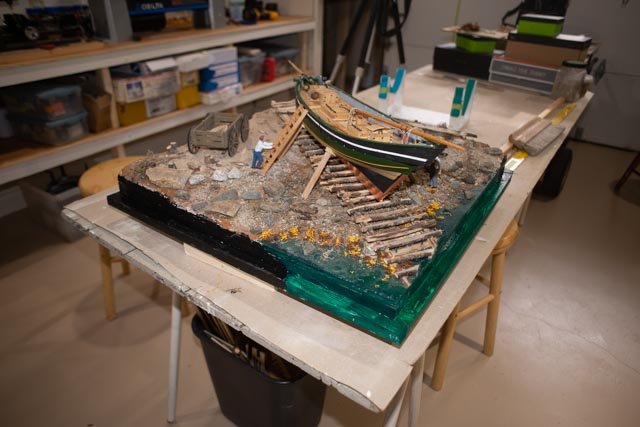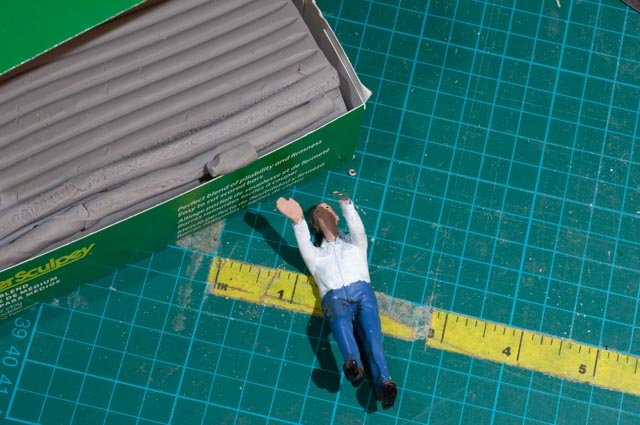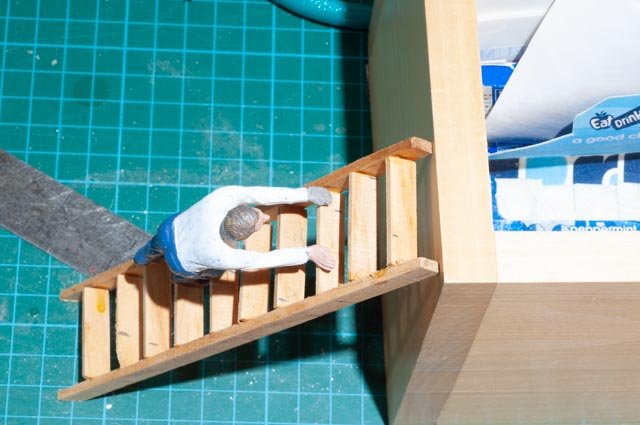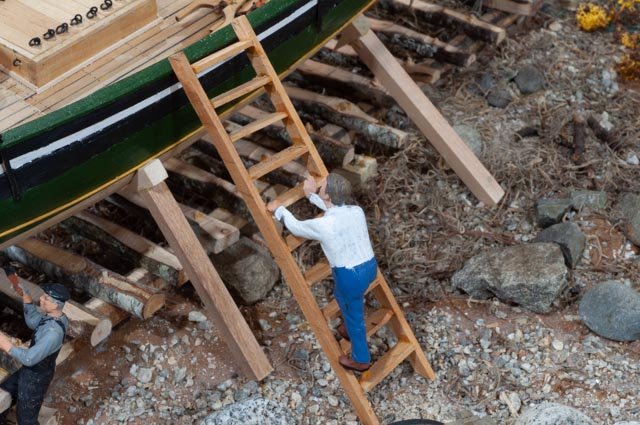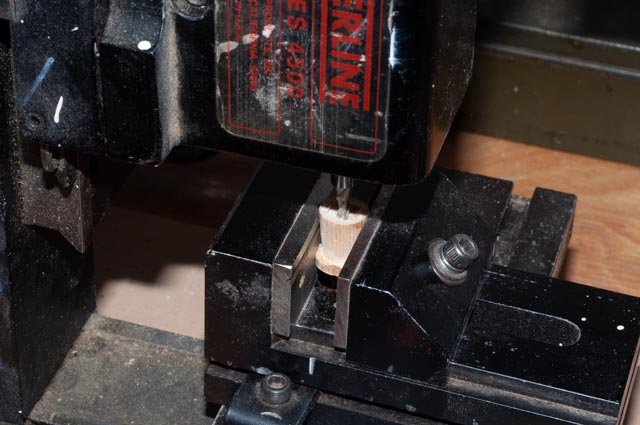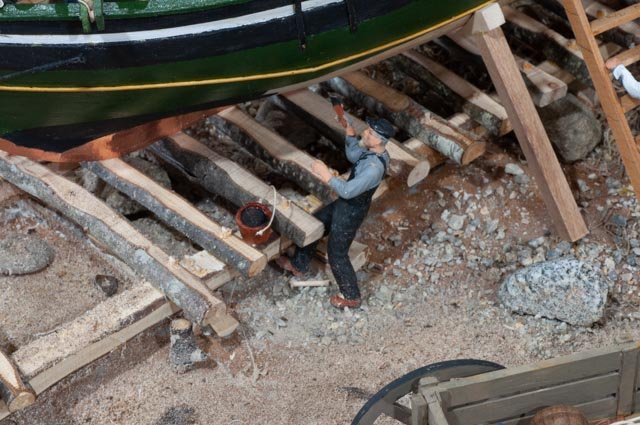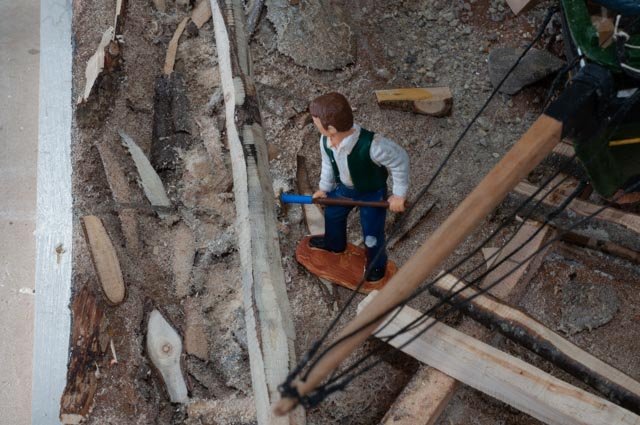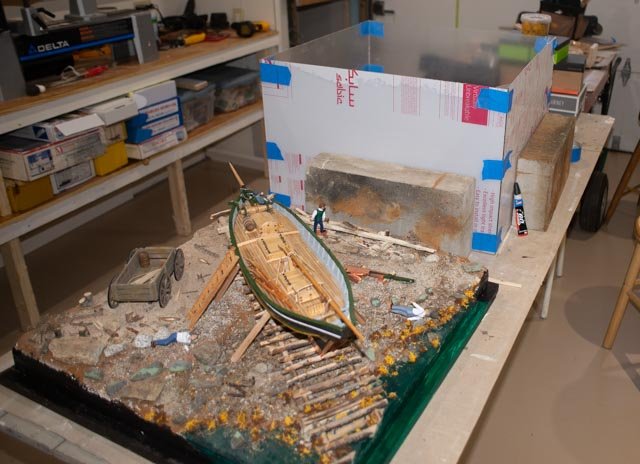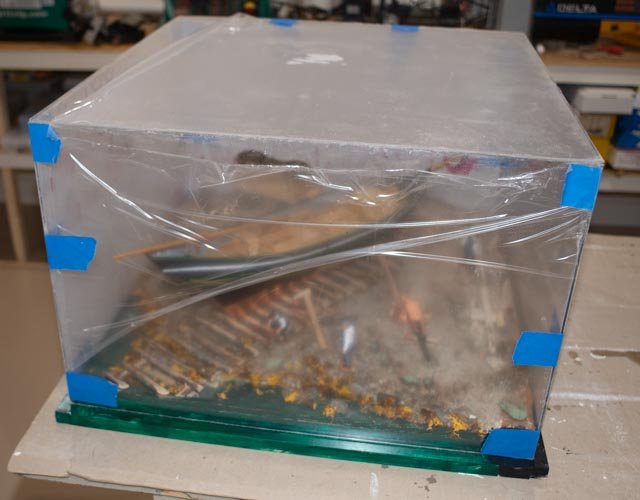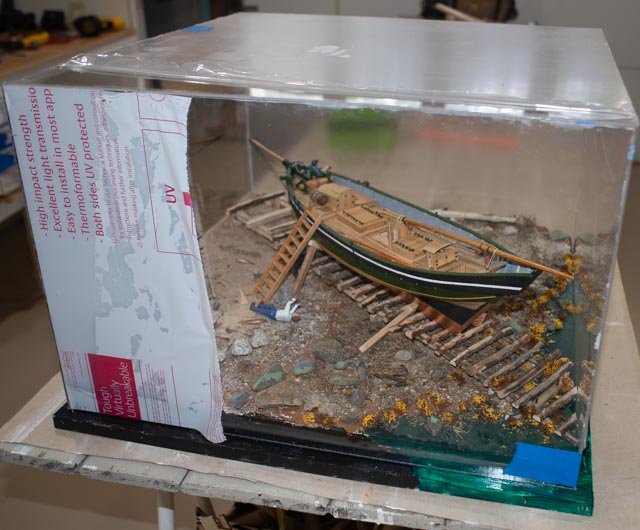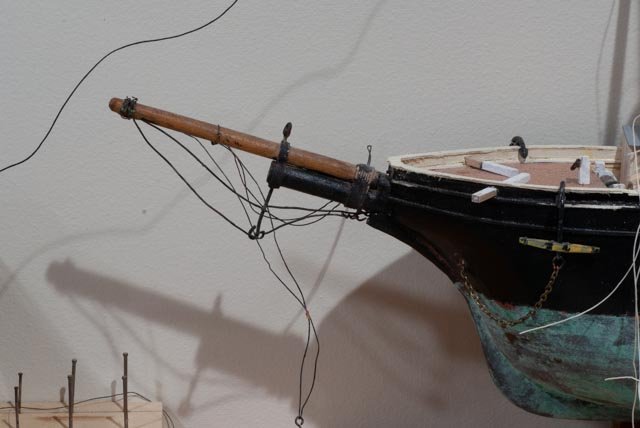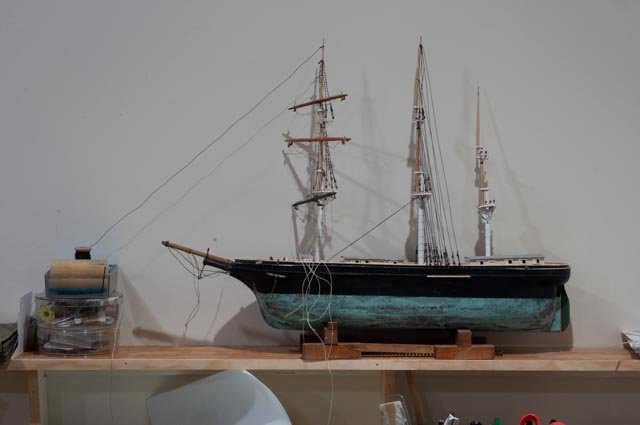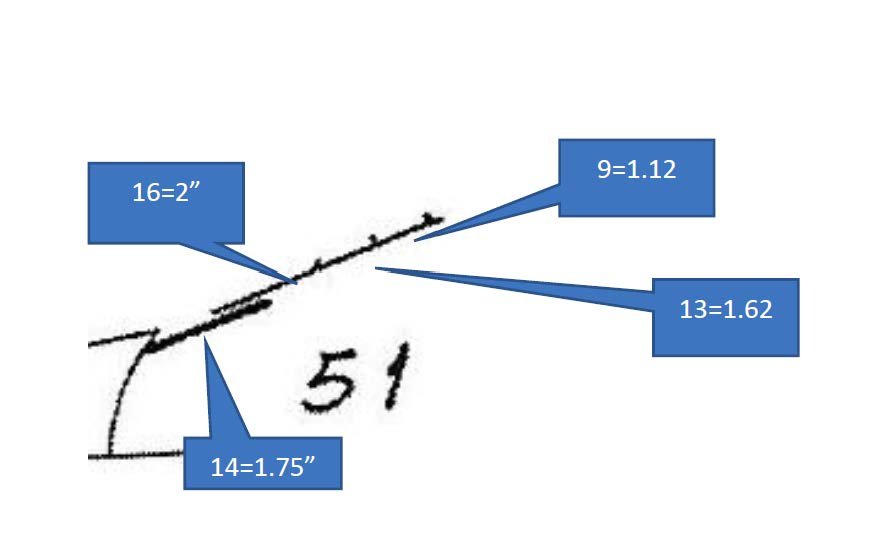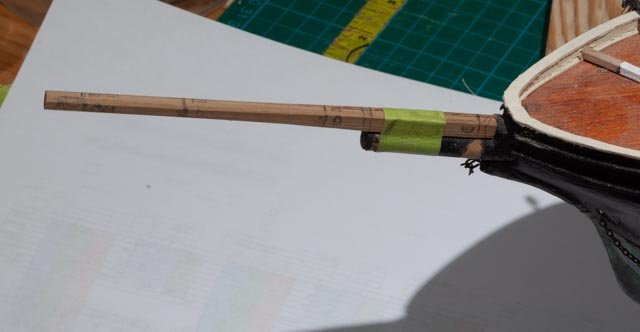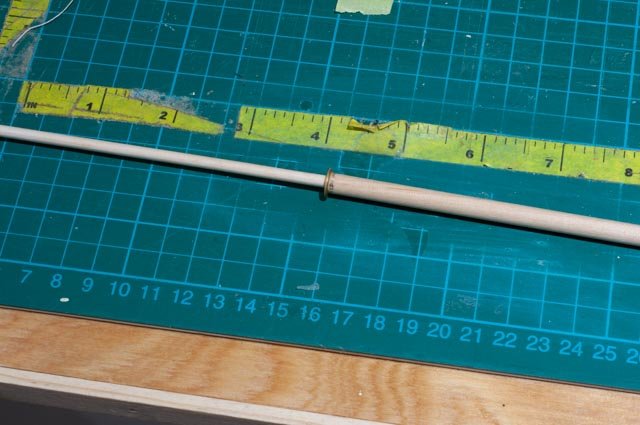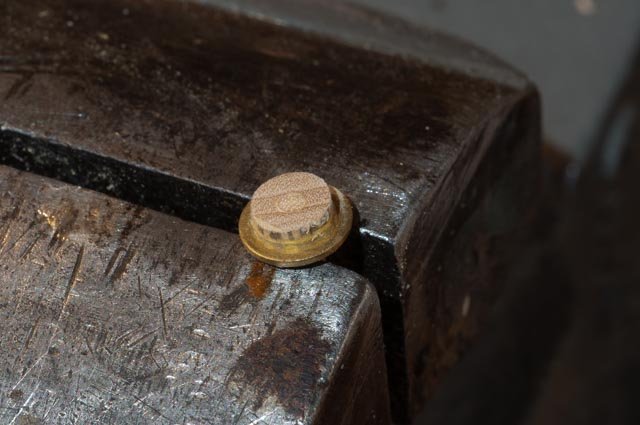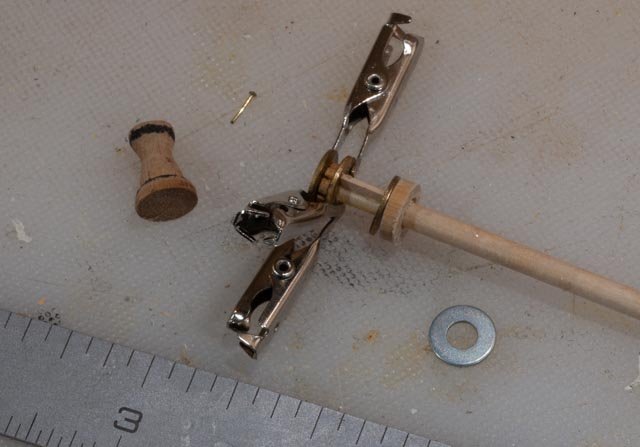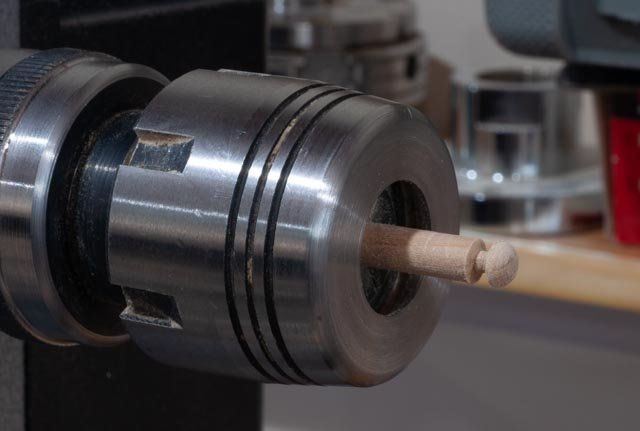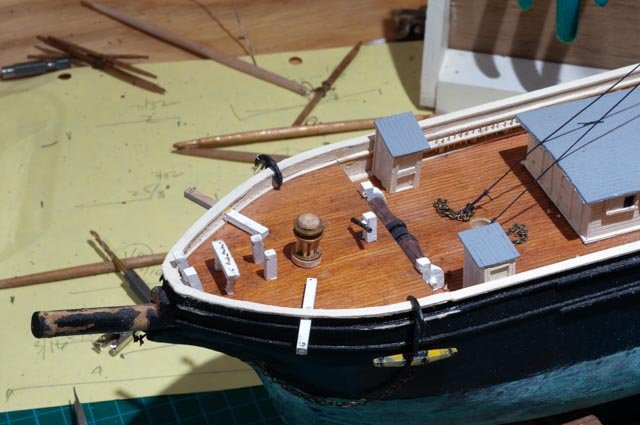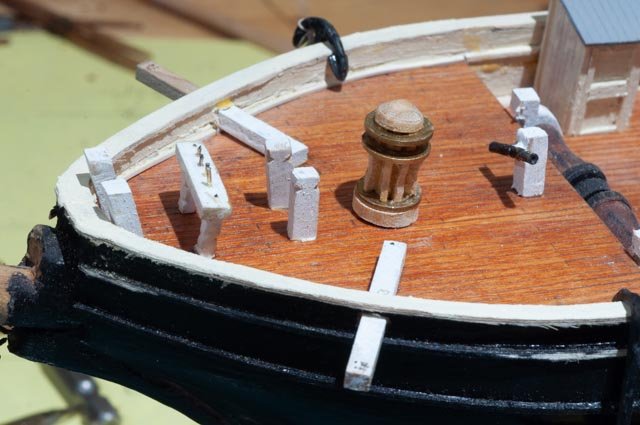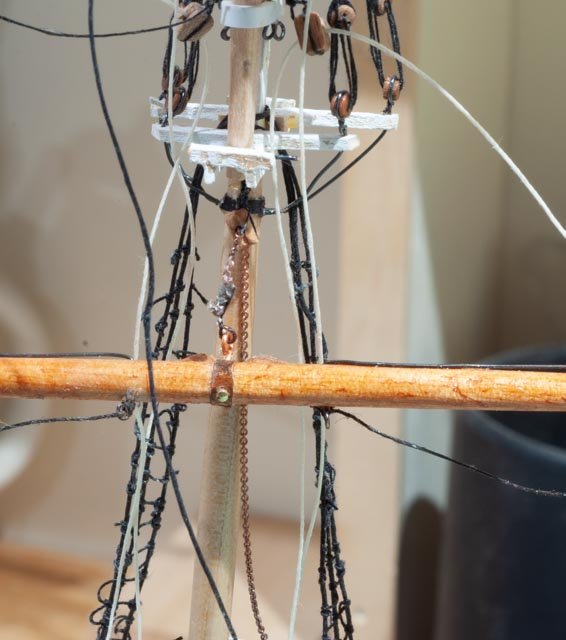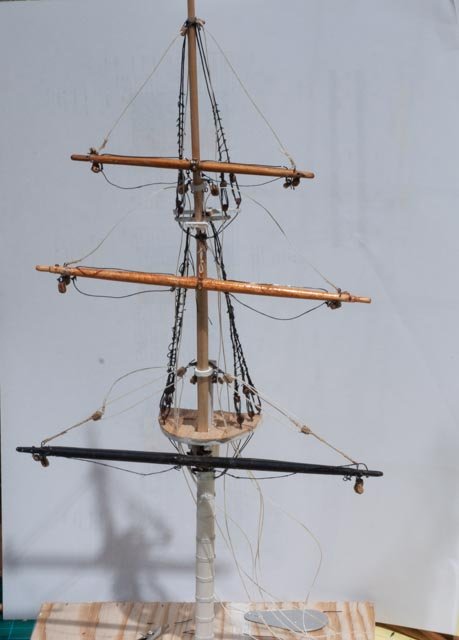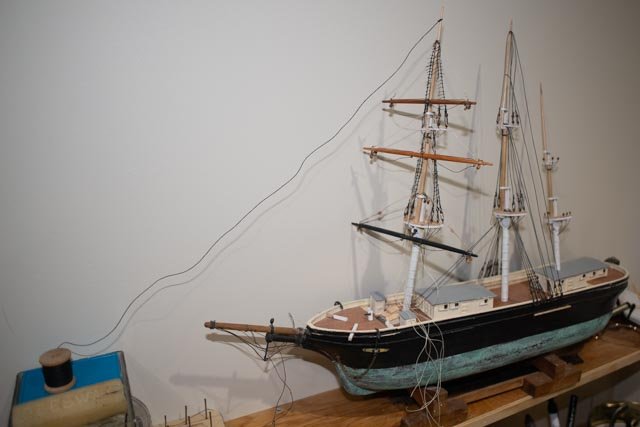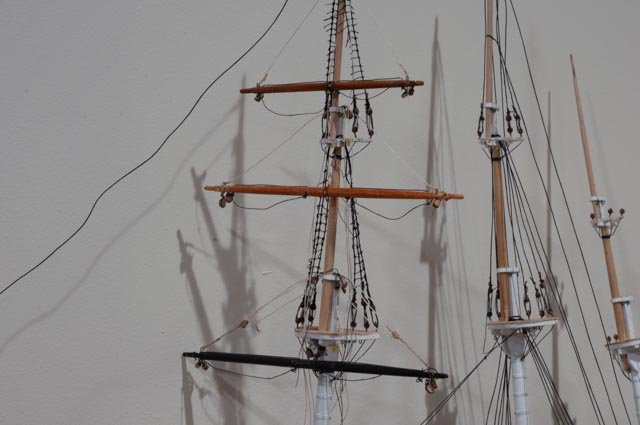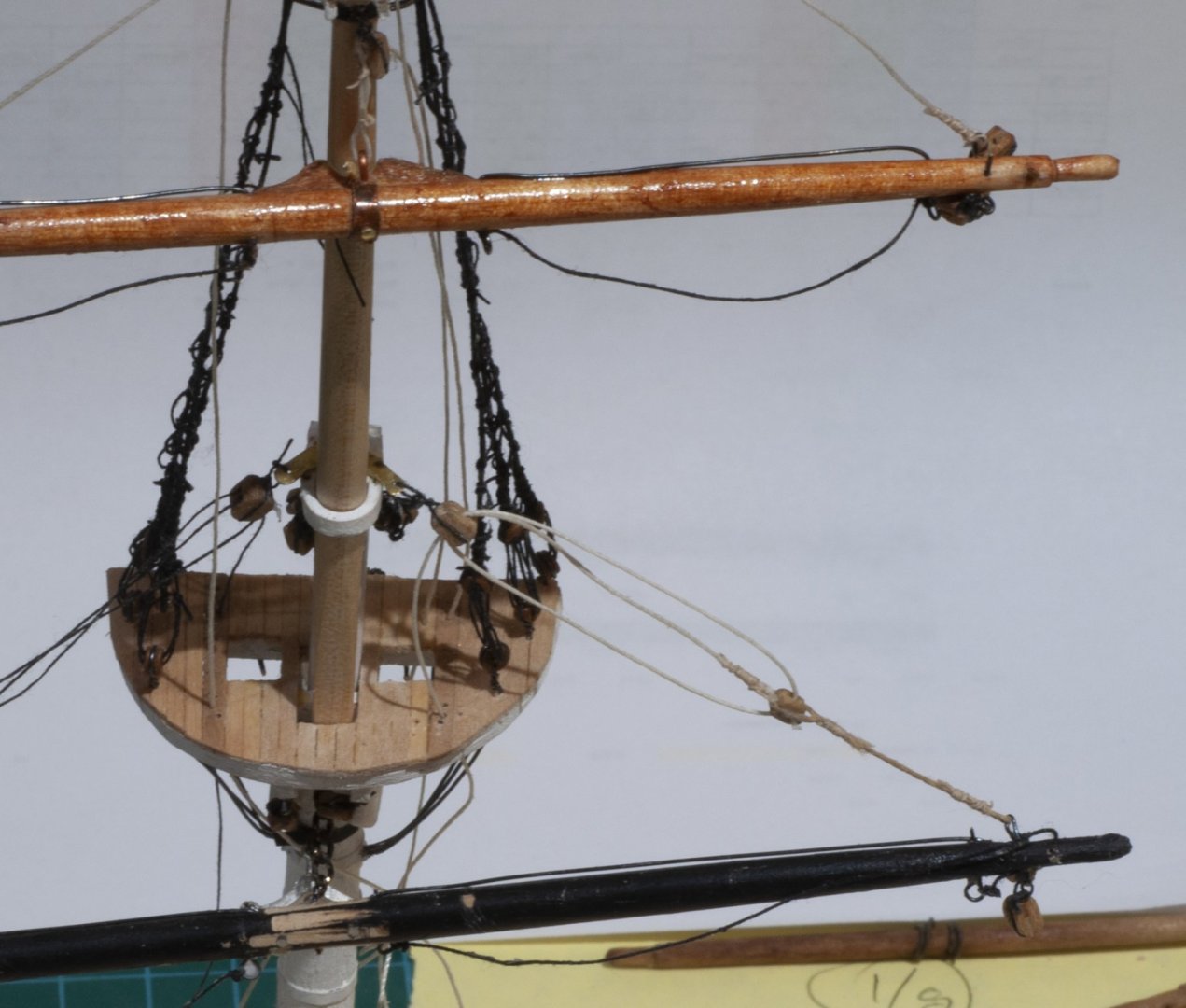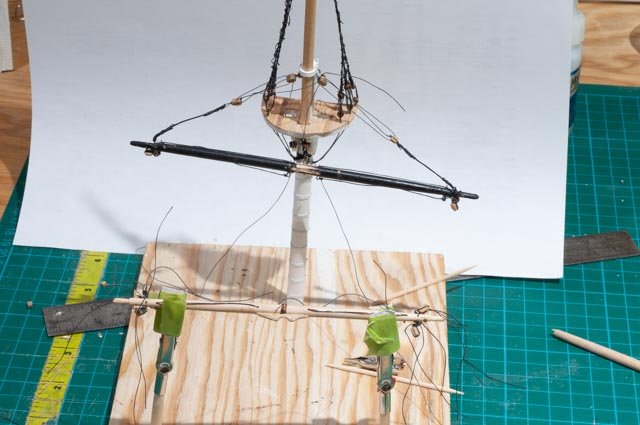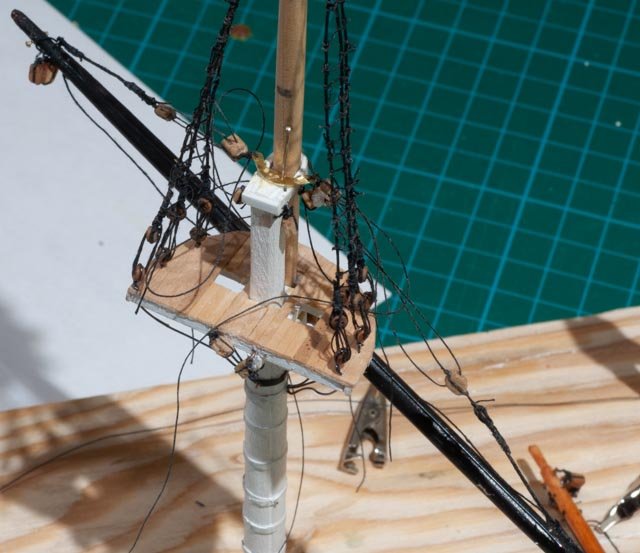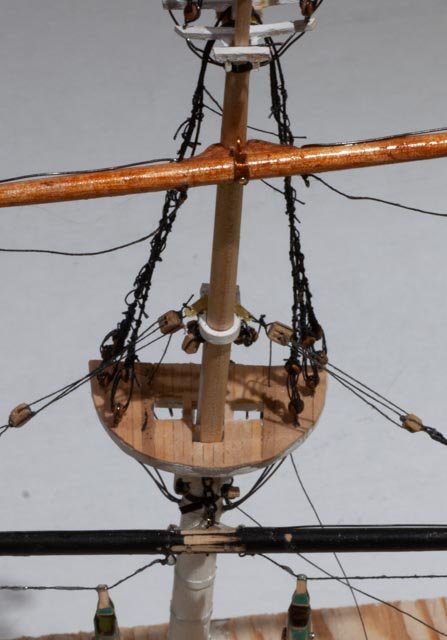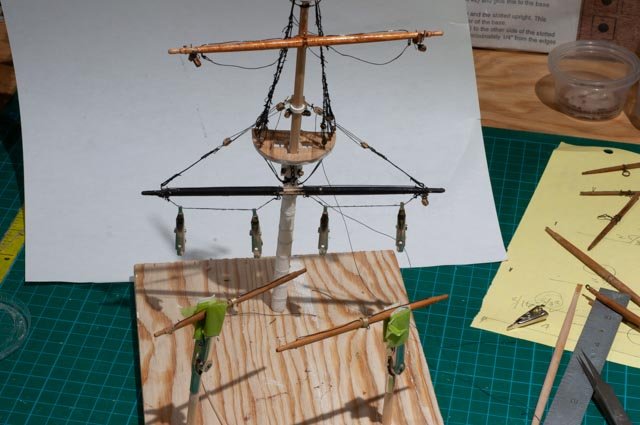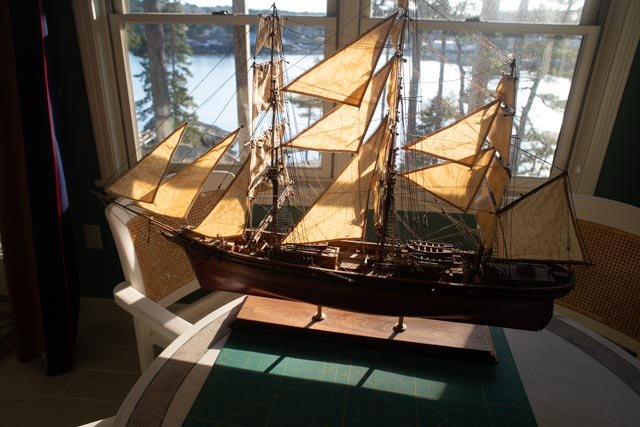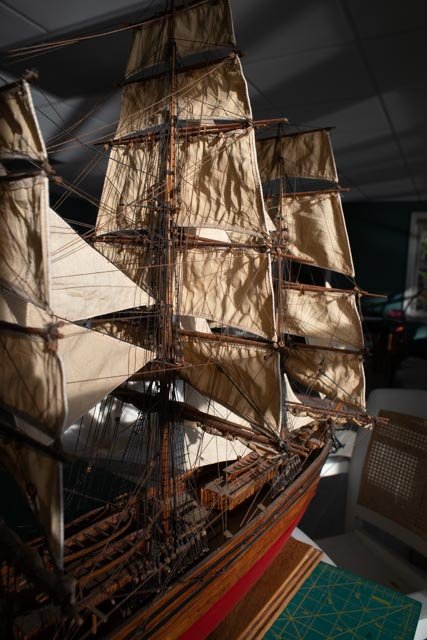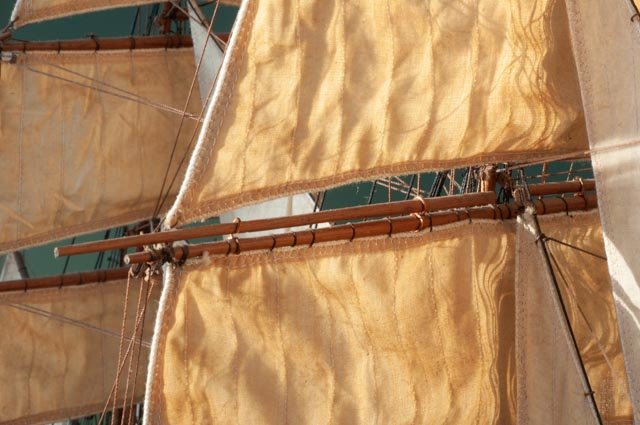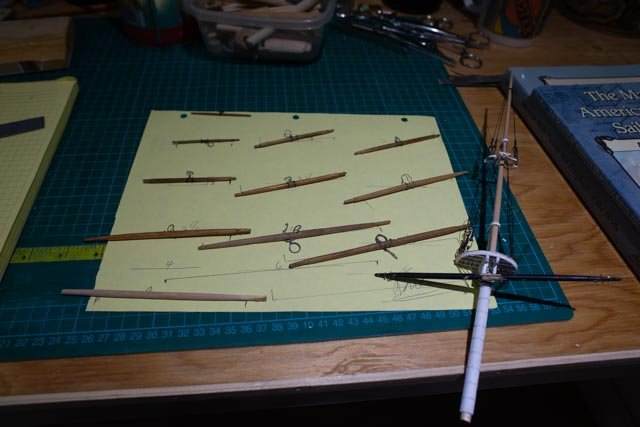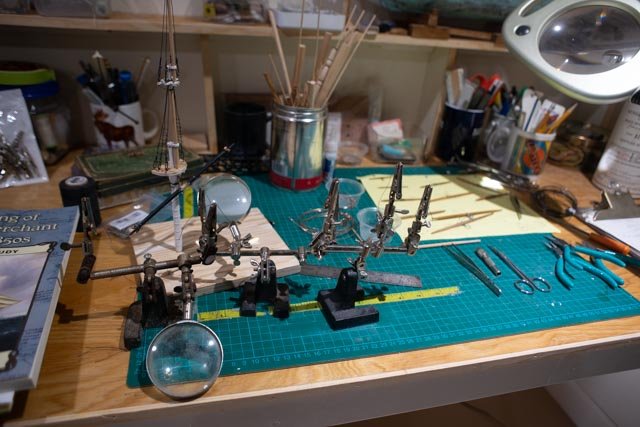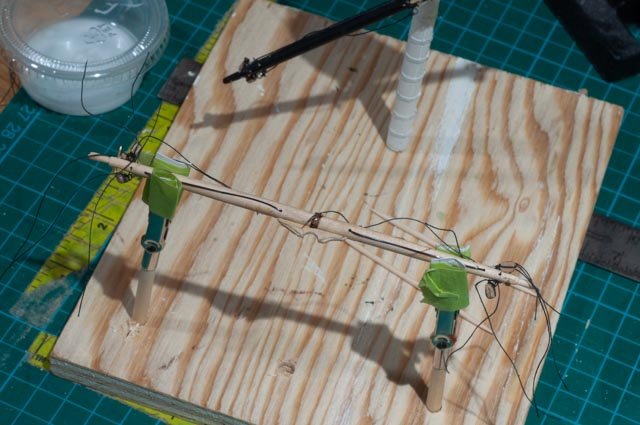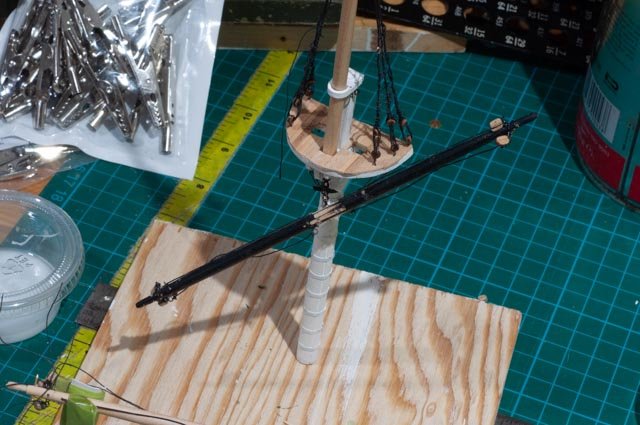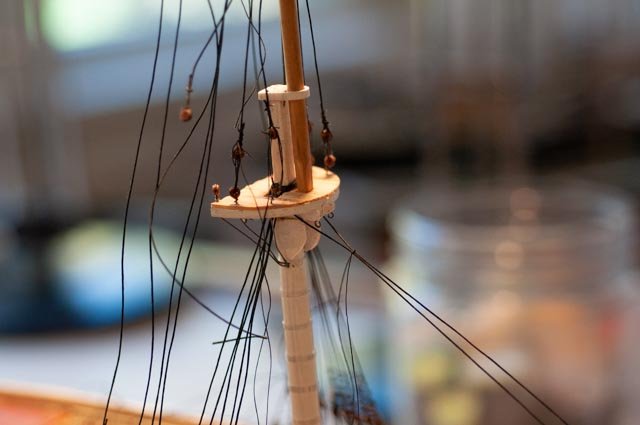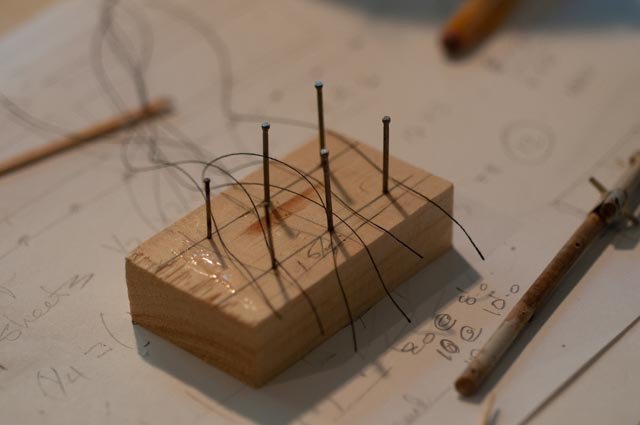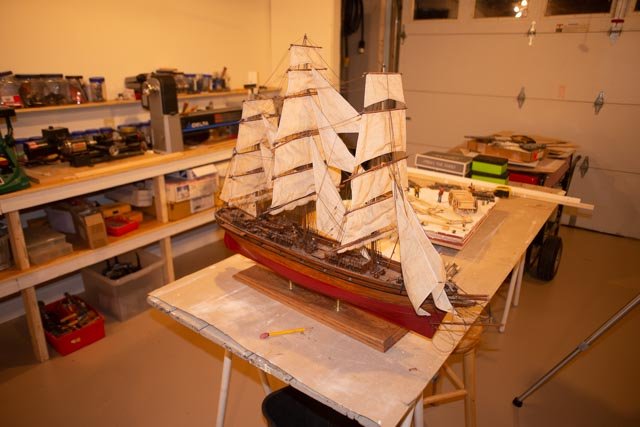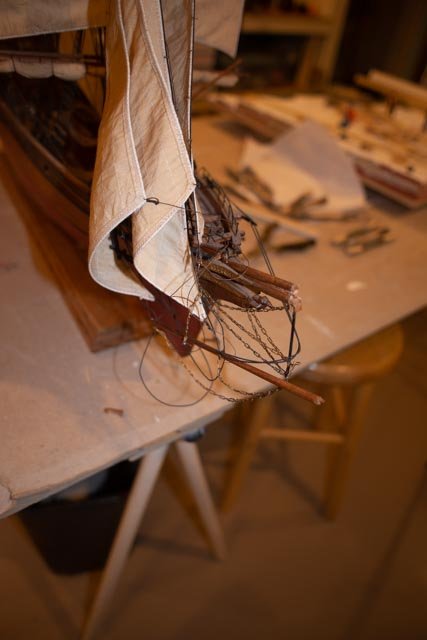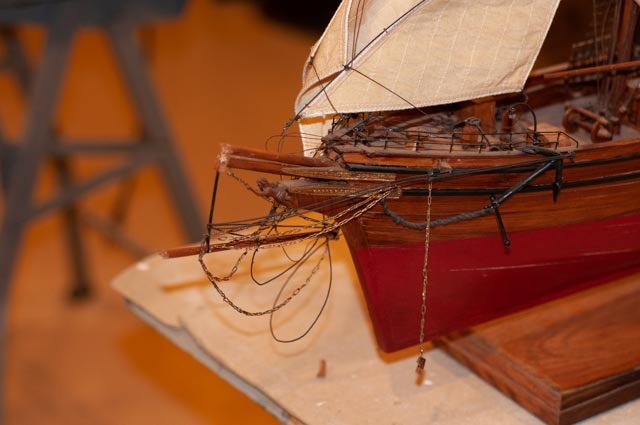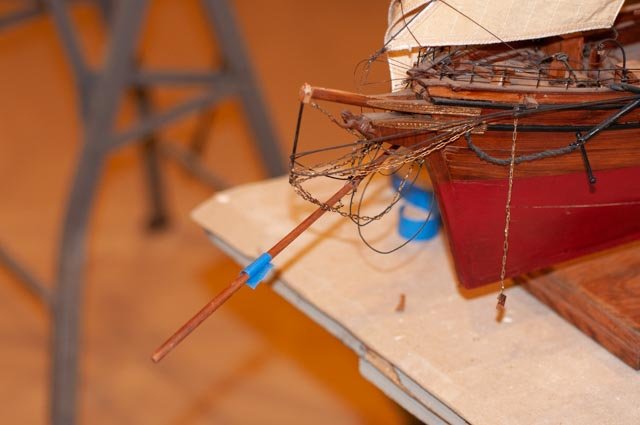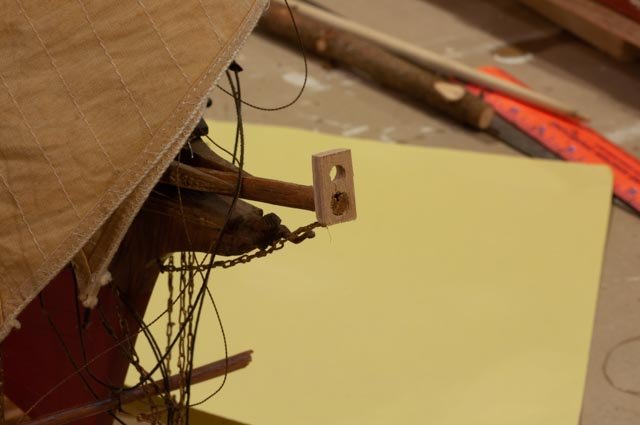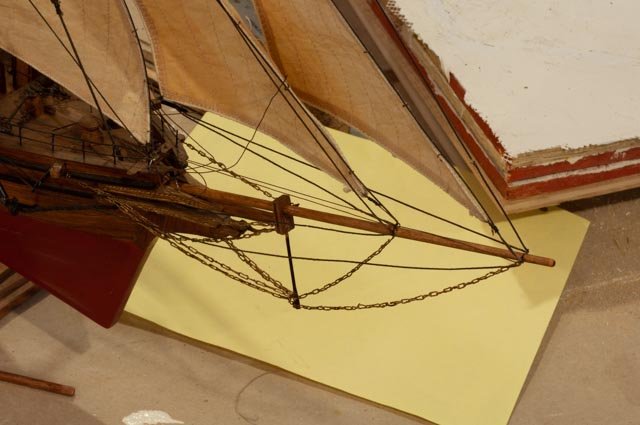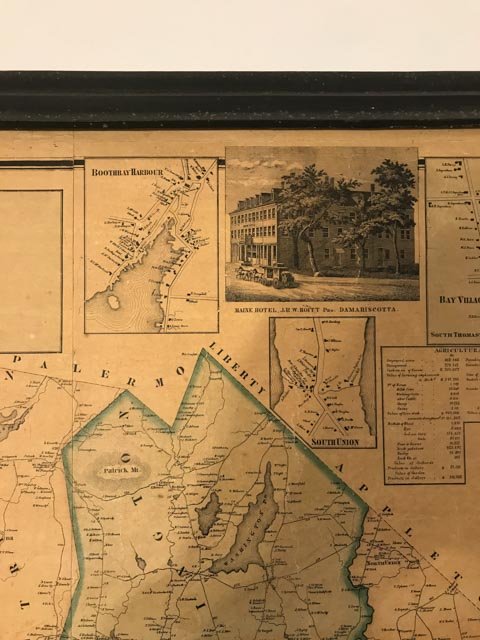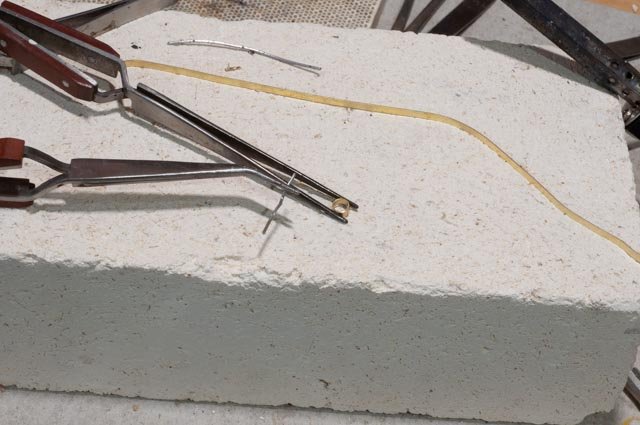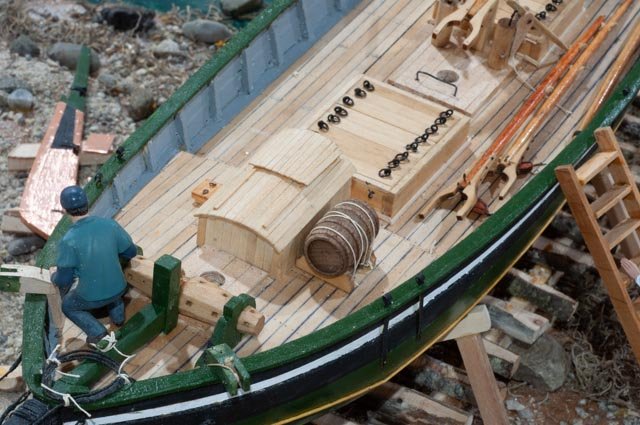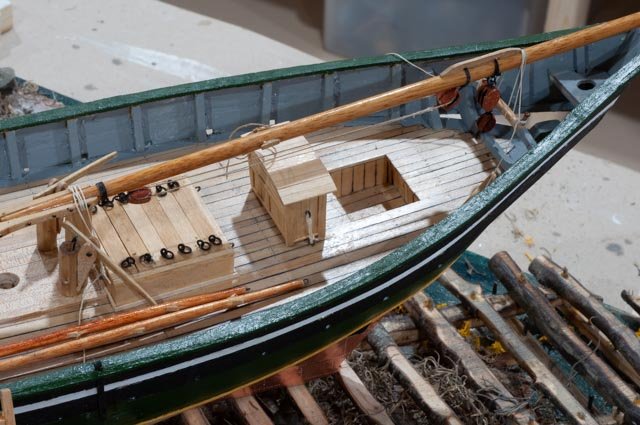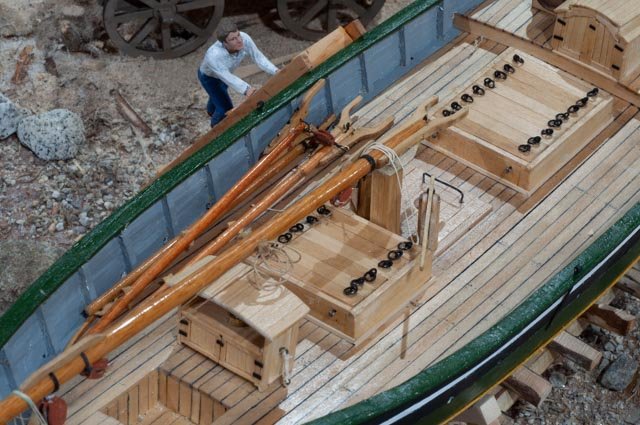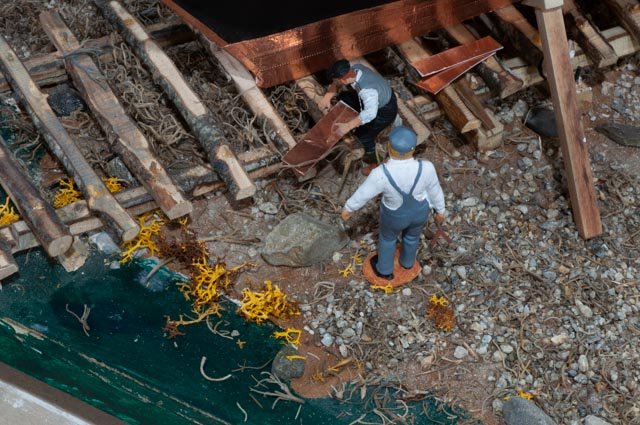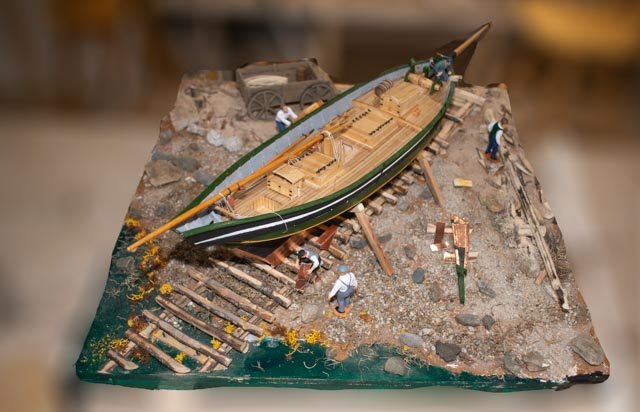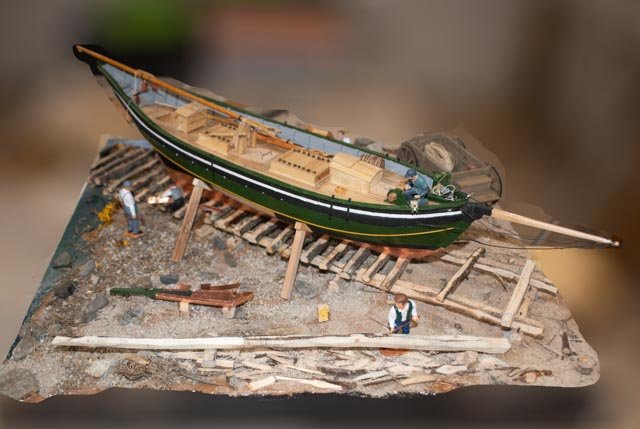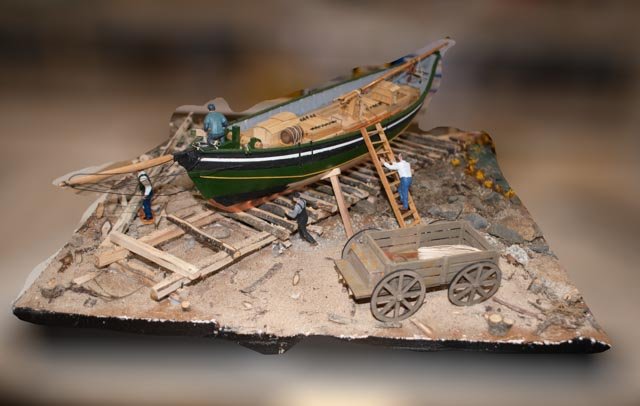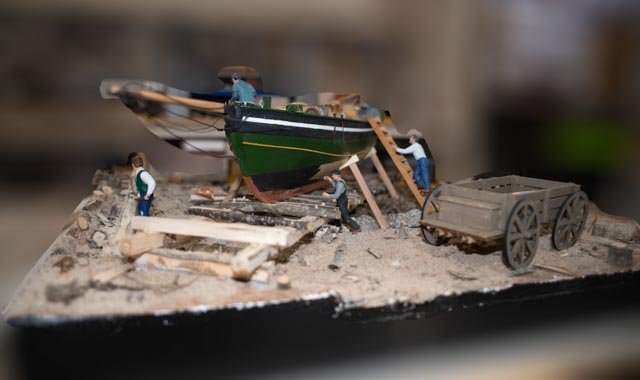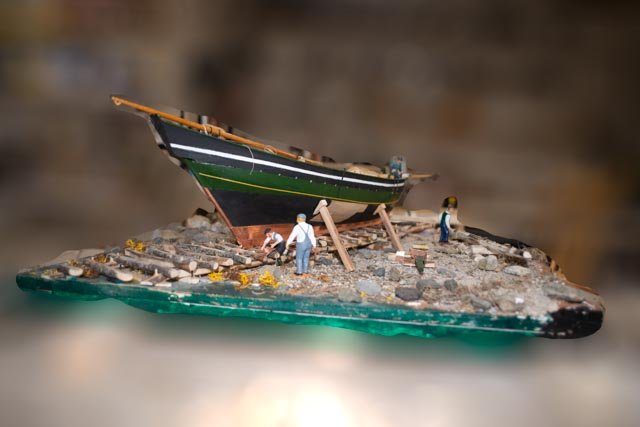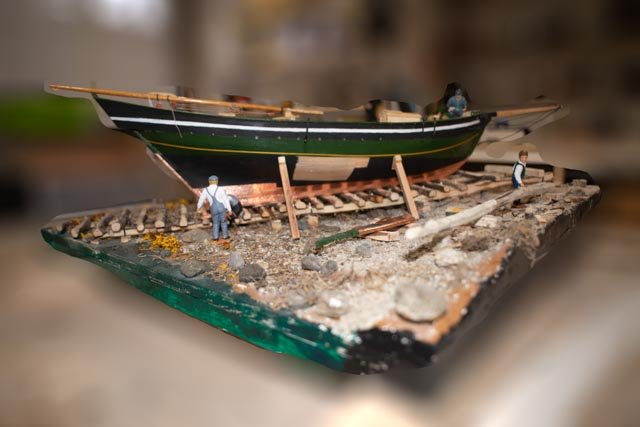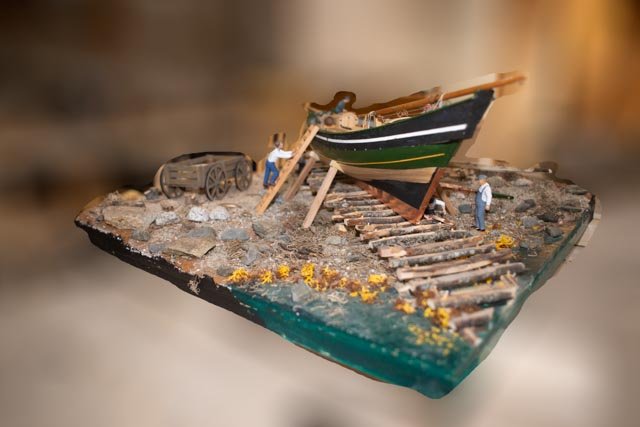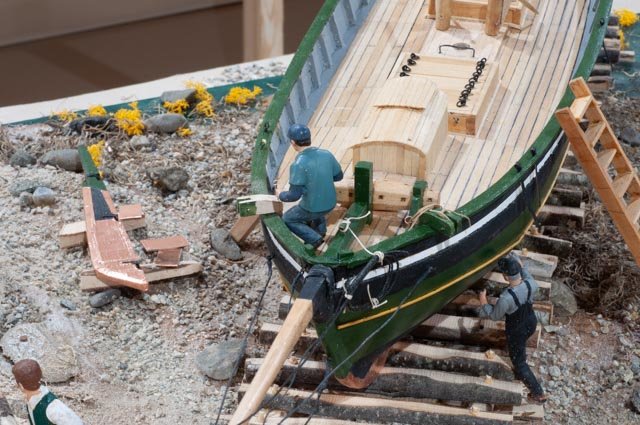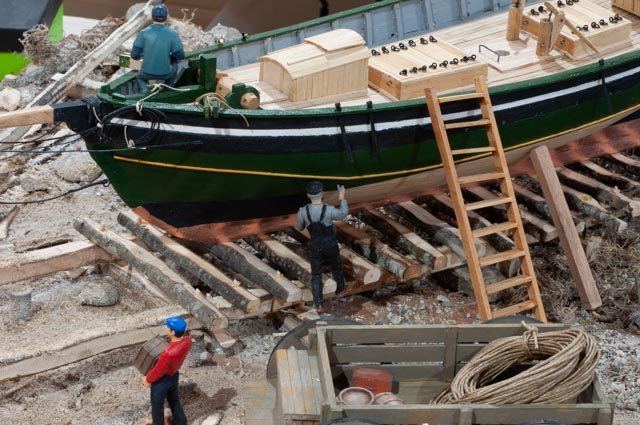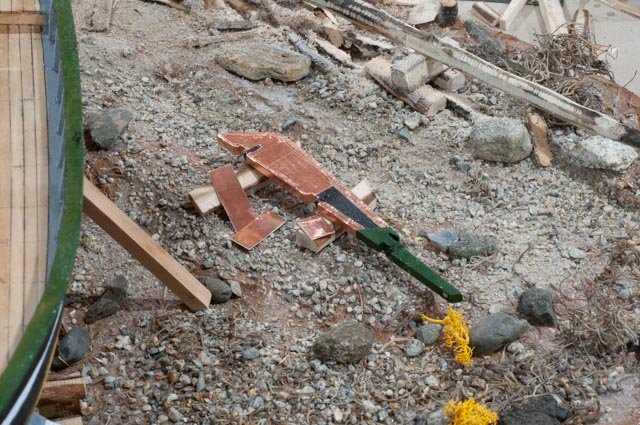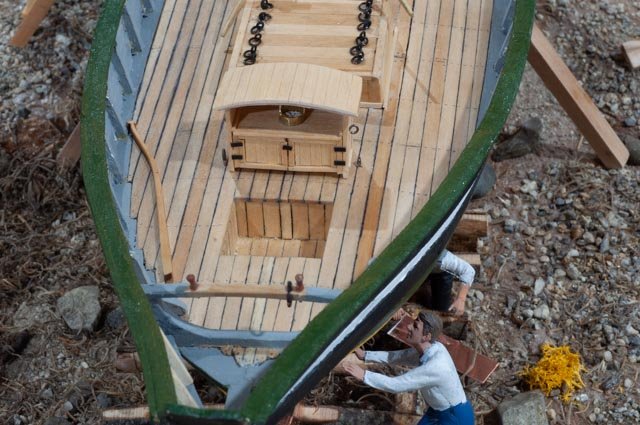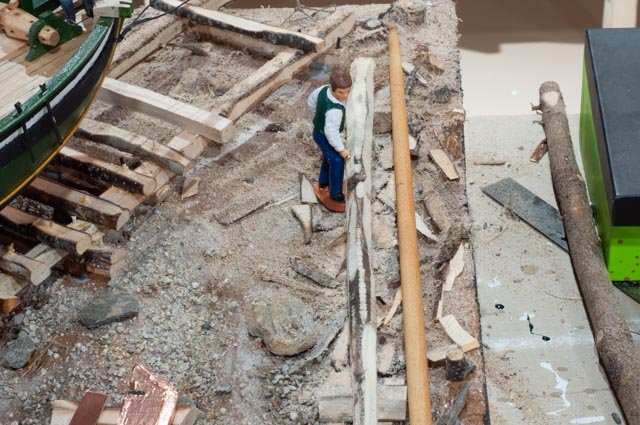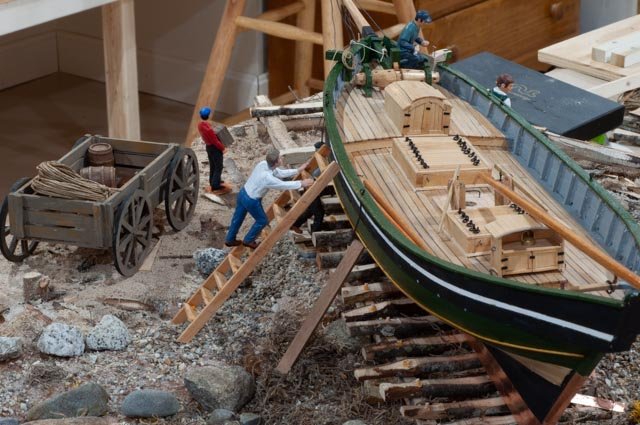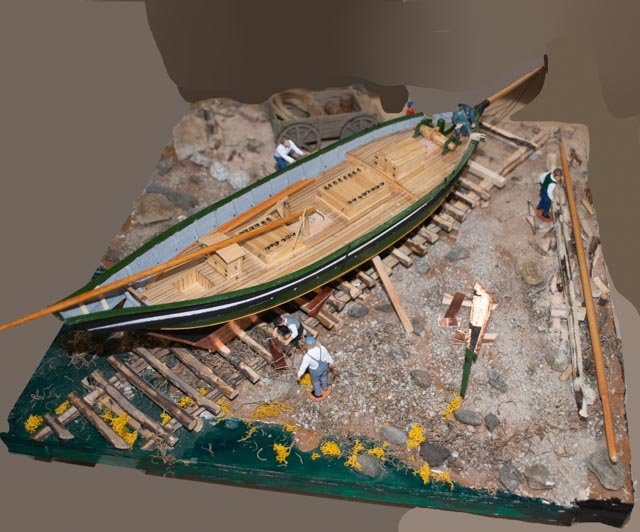-
Posts
863 -
Joined
-
Last visited
Content Type
Profiles
Forums
Gallery
Events
Everything posted by Jond
-
Thanks Chris and Keith I'll really plan to enjoy this one as I get to do both a 1::64 model and a big hull @1:16 that shows of the lines well. I wonder if she will sail cheers
- 23 replies
-
- dancing feather
- pilot schooner
-
(and 1 more)
Tagged with:
-
great choice for a schooner build. I built Charles Notman in 1:48 scale and RC sailed her twice. I got quite a few fittings from Bluejacket. They can be quite helpful too. A friend was building the kit at the same time. He loved it and did a great job. She is a real beauty. I recommend you find a copy of A Shipyard in Maine. It tells the whole story of Percy and Small where Charles Notman was their first 4 master. I will definitely follow along cheers jon
- 144 replies
-
- charles p notman
- finished
-
(and 1 more)
Tagged with:
-
posting 01 the beginning The beginning of this story started in 2001. I was off to Newburyport, MA to buy plans for Bluenose and Gertrude Thebaud . While in the store I saw and bought a small kit of a beautiful little schooner named Dancing Feather. I was still working for many more years but got some good quality time in Maine in between foreign assignments and on weekends while working in Boston. I tell the story in my Bluenose building log where the first build of this schooner took place. It was never completed. I used the kit plans and fortunately scanned them, as they have disappeared. I built the RC hull in the winter of 2007-2008. We all know what happened in 2008 and it I went traveling for the next 5 years. It was January 2014 when I finally retired. That year was filled with other projects ending with the start of Charles Notman, a seven foot sailing Schooner. In 2015 I built the 42 inch long pair of RC sailing sloops and restarted Dancing feather at the very end of the year. Again, I never completed it, but I made progress in the direction of an under detailed potential sailing model. Everything I did was an experiment. I am glad I did that as I made many mistakes. In 2016 I drifted into Bluenose, another 7 foot sailable schooner. She was a great learning exercise. In that exercise I drifted into trying to do too much detail. My son visited and said to me that when I build a model I need to decide. Am I going to sail it or tell a history story about it. After two dioramas, I agree there is a lot of difference. Now that the Little Pinky from Boothbay [ phase one] is done I am working on the first ship of Boothbay, Aphrodite. It is very tedious at 1:96 scale and I love working on it , but I need something else to begin too. A week ago, I took out the old Dancing Feather kit. It is by A J Fisher and extremely basic. The only real piece to use is the carved hull. What I am now doing for this project is the following. I will build the Kit out as a study for what I want to do on the big ¾ scale model. I will then rework much of the rigging on the big version. Keep it simple and see if I can get it to sail. One of the issues will be how to cut down the sizing of the sails so at 1:16 it works. Full size sails at scale do not work too well as they will over power the schooner. I did it on the two racing sloops and learned that cut down of the main sail to match the cut down of the jib was bad. The main needs more power and in light air the sailing was touchy. I have a few photos of the original 2007 building of the hull and spars and will share them in a few posts to get us up to date with what was built. And then we will look at what I must undo or fix so she can sail as i go through building the small 3/16 scale version. Post 01 Early build 2007 In my Bluenose log we find the bluenose hull was planked and then hung from the ceiling of the shop. In 2007 to 2008 I was able to follow the same process and build this hull. 01 here is the same method I learned at Wooden Boat school. Bulkheads were 4 mm lauan plywood, planks were stripped cedar roughly 1/8 x 5/16. There are thin strips of 1/31 soaked and then fit as ribs over the forms. Then blue tape separates the rib from the form and the planks are glued to the ribs and toothpicks driven home into the lauan form. 02 the dagger board is a carryover from the Neskaeg Marblehead 50 design. I am experimenting on making it removable to allow display without the extended fitting 03 how about the strength of that keelson. I would never do it that thick again. 04 since we are fiber glassing the hull there is no spiling required 05 here we see the hull is planked. Behind us we see a Marblehead 50 naskeag that i built at Wooden Boat school in 2001. Note the permanent danger board keel with lead bulb. up next some history on who dancing Feather was and building the deck Cheers
- 23 replies
-
- dancing feather
- pilot schooner
-
(and 1 more)
Tagged with:
-
Post 24 A little bit of rigging An early spring pulls us away from the shop a lot, so things tend to slow down. I built the acrylic box for my other pinky Schooner build, and working on that also takes some time. Regardless we continue in our internship here of trying both to build a ship for the first time and to work at 1:96 scale. I have fallen into the sequence squeeze. I can not put in the pumps until I put in the Mizzen fore stay. I cannot do that until I rig off boat much of the mizzen and set it with yards in place. When do I install the main lower yard? Is it better before or after all the upper yards? Since the mast is already stepped what must be done before ratlines? I built and lost the helm in the house move last November. I found the rudder and now rebuilt the helm. Looking at it in place, I need a binnacle. The dimensions are again tight, so what to do. On and on we go. After reading professor Tosti volume 2, I decided I need to solve soldering. I leave his incredible machining and basic high quality to an upper class of builder. many of us just remain in awe. However we must learn so.....I had seen advertisements for the solid base with strong arms holding little pieces that Ed used in his book. After reading, I finally made the plunge…all of $100 plus investment was made. wow was it worth every penny. My first try was to make something that needed to hold a pin hard against another brass bar to make a tee handle. It is a handle for the windlass traveler see saw / wild cat or whatever it is called. 164 in this photo I am making a lower yard yoke. 165 here it is after solder and ready for final filing. 166 here we are on the main lower yard along with the dental bands and other hardware ready for black paint 167 and finally here we are with our first yard in place. That is sort of in place. Lots of lines need to be added. the chain yard sling is rigged and drops toward the deck. I don't know I if need to add block and tackle or where to make it off. The Crowther's book identifies 192 pins on deck and every line that makes off. No slings are listed there , just the port and starboard lifts. My confusion is that his line diagram clearly identifies the slings and shows them with a down arrow. many models just have a little chain going from the yard to an eye on the mast. i could do that , but I can not imagine how that is correct. 168 as a reminder, here are the yards from the existing model. I will throw away the wire connections, plug the holes and go from there. Hopefully I can reuse them . if not a simple dowel is all I will do for this build. I am not ready for the 7 stages of trimming a log. 169 Here I updated the main topsail yard and got her in place and continue to work away at ratlines. Now back to the overall question of sequences. I am just going for it. Working on everything at once. Tie a few ratlines, work on a yard to fix, another yard to rig etc. I am learning with each item, so I guess by the time I finish this thing I hope to be ready to start a ship. Some simple things I have learned. I was online at Bluejacket for some things and decided to buy some fine annealed steel to try to use for stropping these tiny wood blocks. The thread I have been using is just a pain. any load it breaks or comes loose. Wow the annealed steel wire is so much better than the soft copper stuff I have also been using that comes from Joann’s. The soft copper wire has no strength to hold shape. 170 here is a look at where I am today on sequence. One thing I find is the upper masts slipped and the shrouds are loose. As soon as I get all those ratlines on, I will somehow push up the mast to make the shrouds taught and pin it to the lower mast. It was easy to do on the mizzen off boat, I think it is going to be hard on the main being built in place. i have a pin acting as a fid onto the cross trees, but it is not holding. Finally, back to the deck work that was not completed aft. 171 I rebuilt a helm , put the copper treatment on the rudder and mounted it. I am nuts I know, but I need a binnacle and a bell 172 here is my first attempt at a binnacle. Surely, they would have had iron balls to adjust. I have no info as to what it might have looked like in 1853, so this try is at least a place holder. I suppose the bell could go on top of the helm. I have seen that on another model. But if it goes there, who could ever hear it. Doesn’t it belong amid ship, so the crew can hear watch changes? On most schooners it is on the foremast facing the companion way to the focs'le. I have all the dead eyes strung for the mizzen, so coming soon I hope to step it. Cheers
- 57 replies
-
Post 23 Complete forward deck This is always the fun part. As we read others logs and learn how to do things a new way it is always fun to try things out. There will be several things here that I tried and as long as I get the idea right, I am happy. First a few assembly items 150 first up is make boat skids. I learned the are shaped to fit parallel to the cabin roof. Here we are shaping them 151 There are many small parts to make and paint. I decided to use real 3/16” belaying pins on the fife rails as they are so visible. I had some of the right scale in pear but two of eight broke while trying to install them. I assume any attempt to tie off to them would be a disaster, so I opted for brass. The boats are simple sand and file carved and solid. I added keels, bow stems and gunnels. The painted screen in the skylights is not perfect but represent windows well enough. I wish I had a source of a bigger size mesh. I should I suppose add bars and would have if working at a bigger scale 152 here I drilled in pins and installed the boat skids. This is where I decided I need to show the required 3 boats that a merchant ship was required to carry if over 400 tons. [ so I read] Now a review of the bow area 153 A general overview shot. Aphrodite is now sitting in a rigging stand. We all have our own approach. I started these stands for my former schooners that were 4 to 7 feet long. This is an experiment for now at this small size, but I am thinking to use this for models with copper tape bottoms too. These strapped stands let me rotate the hull and don’t hurt the bottom. I did add the main topmast forestays 154 The bow sprit and jib boom and lashed bob stays. I laugh at this picture as I see the cap twisted on me. oh well. 155 Here is the some of the work. I made little handles for the windless see-saw lever. I was proud of my soldering. I bought a real solder stand and found it much easier to hold a pin to a bar and get a simple solder joint without too much pain. 156 The port anchor is secured for sailing on the rail. I am still concerned as to all the anchor lifting and holding operations. I learned the schooner method which is a bit different. The 6-part block in the cat head did not work out for me at this scale, so in the rebuild cat head there are two sheaves. I chose to rig one block and with a hook that I assume grabs the chain. I also assume the fishing tackle from the top of the foremast would be hoisting the anchor. I would love to learn the right way for these ships vs Schooners. In the meantime, I lashed the block to a pin on the rail. 157 the starboard anchor is ready to drop. I have the short chain from under the cat head to an open hook on the forward side of the cat head. The L shape bar, its handle up, has a holding bar bent over the aft side of the cat head holding the handle upright. I took this idea from the well-known master in his volume II on Young America. 158 Looking aft things seem to be where they need to be. Note the added space between the head, bosun locker and center structures. I trimmed them up and squeezed them back into the sides a bit and lowered their roofs. I also replaced the forward pin rail with a new one drilled in the mill and with real belaying pins 159 Boats I will not lash them down yet as they may interfere with rigging the main mast. This is also a good shot to see the change I made to the standard plan that had a big skylight in the middle of the cabin. I literally cut it in half and lowered it to make it proportional for the space available with the added boats. 160 this to me is an important view. Please refer to picture 146 where I discuss the tightness of al this area. It was just wrong. I took it all apart, shrunk things a bit and now there is a corridor to the two little ladders and maybe 2 full feet between the bitts and the companionway. One possible change still needed that jumps out in this picture is to slide the capstan aft to center it within the area between the bitts and the samson post , I will not move it enough to expose the hole now in its center but there should be more room all around it I believe. 161 I think the general look is a reasonable representation of what a ship of 1853 would have had on deck before gobs of rigging lines. Here also is a good view of the whisker booms I added to correctly hold the head stays as they return to the side of the hull. They connect right near the head and need to give the anchor room to be rigged. 162 a fun wide angel shot coming at you Looking forward 163 I need to work aft. I am making my attempt of pumps and need to get the aft deck done. I had a wheel and small helm but lost it. Cheers
- 57 replies
-
thank you G L I know some one who makes complete figures with wire and sculpy or other similar materials. My attempt was a disaster, so I have bought figures. I am working now at very small scale and may try..wee'll see cheers and thanks for dropping in
- 69 replies
-
- diorama
- Glad Tidings
-
(and 2 more)
Tagged with:
-
Post 22 Bow sprit and deck work part 2 I like to work on several different things at a time. That is why these posts are so partial. Deck work. It is time to build fife rails, pumps, skylights and think about boats. Also to add any more critical deck eyes for standing rigging. 138 I start this midpoint review by reminding myself of the Crothers design of Alma that we are using. There are few differences that will help us understand at least where a few things don't work out just right. As per our text, Aphrodite was 680 tons at 147 feet long and 31+ wide. Alma was 826 tons at 153 feet long and 34+ wide. The 6 feet in extra length could be very help full and I will show where. The width is less significant. This Alna plan is basically what I am building. Does it all fit? 139 Reading other people’s logs can significantly improve our work. Here I am following where many went before me. This is the first time I started to use by my big brothers hand me down Sherline set up as a mill to drill little holes all in a row. Wow what a difference. 140 reading another log I learned to use screening for windows and the like. Why not sky lights at this tiny scale? We’ll see 141 I am trying to build fife rails. Wow are they small. I cannot yet imaging tying off lines to these, but I am going on adding lined to the rigging. I need to rethink line sizes, that is for sure. 142 boats. This can be a long story. Boats on ships. After more reading I learned that ships over 400 tones should have had three boats. The question is where they go. This is the typical location and we are good with two. We need to omit or significantly reduce the sky light, or maybe place the boats lie out nearer the edge if we want three. More study is needed. In the meantime, I think I am staying with two. Also these boats are small at 22 and 24 feet. I plotted out a long boat and there was no way to bring it aboard. So for this midpoint review to see what we are going to try to show 143 this overall view shows fife rails, boats and skylights partially done and sitting in place 144 the main fife rail is extended to pick up pumps. I am taking this from other common designs but have no specific information. 145 this view shows an issue. The hole in the deck is for the capstan located as per the plan. Once we extend the fife rail and will put in something to represent the pumps, it is obvious we need to move the capstan to the center of the open space. I will probably add a pad to cover up the oops and it may be properly located under the pumps. 146 here the rail is in at the foremast. The tightness of the whole area is a problem if one considers the lack of clearances. This are would benefit with each of those 6 feet of difference in the two ships designs. Bowsprit update 147 here I am able to use a dental band for the ring on the bowsprit 148 the bowsprit on the original model is almost ¼" too short. I compensate by making the cap proud of the bowsprit. I add both the band and bees as I prepare to rig this out. 149 here we see the overall rigging plan with the extended bowsprit. Now I have some idea of what is in front of me. Up next is to clean up and complete what is here. Nail down the cabins, build a boat frame and rig the bowsprit. Cheers
- 57 replies
-
Post 33 Get ready for the cover. I paid a lot for the glass box that covers Bowdoin. I wanted to try to make my own box this time. I made a silly mistake on day one of this project. I had a perfect 24” by 24” piece of plywood for the base. I should had cut it down to 23.5” by 23.5” but was not thinking about a cover at that time. If you go to Lowes/H depot everything is for 24 inches. I needed four sides at or just under 24.5 and a square top at 24.5 both ways. While at Lowes, a nice guy helped me out. He had a left-over piece of acrylic at 44 by 28 that we cut into two-piece 24.5 square and 16 by 28. He then said only Lexan comes 36 by 48. We cut it into three strips of 16 inch so I could make the other three sides No if you think about this there is a problem if you want to connect parts by solvent welding. How do you connect Lexan to acrylic? We talked about it, and I read some about it and settled on a tube of Loctite super glue. Before we get there, we have few more steps to follow 276 I needed a seat to receive the box, so another trim piece is added to the bottom 277 that new section needs to be painted out to black for underground or blue green for water. Fix the crew 278 one of our guys lost his hand. I drilled and put in a wire frame 279 I shaped a new hand in sculpy. I did not think it wise to put this guy in the oven, so I coated it with very thin AC 280 after a little peach paint we are all good 281 our painter needs a bucket. I chose to machine out a dowel, like I made gas barrels before. 282 here the little bucket of black paint and a paint brush complete the scene. 283 finally we need an adze for the spar maker. I put a thin brass rod into his hands, stuck on a flat end for the tool. I then wrapped the brass with tape to get the right thickness. What is fun is making all this up as we go. also I see in this photo I need top be sure I painted the blue tape. Now the box 284 here we are gluing it up. After using a concrete block to hold the sides vertical with the first application of super glue, I came back and ran a fillet on the inside of each joint. This stuff is only about 1/8” thick and a bit flexible. We’ll see how it goes. At least it won’t hurt anyone if they hit it. 285 here we are…amazing it fits 286 I should have asked for help as things fell over . now it is shaky to take if off. I will wait till be are closer to the showing before removing all the protection. cheers
- 69 replies
-
- diorama
- Glad Tidings
-
(and 2 more)
Tagged with:
-
I had to laugh at myself again. I was reading Mr. Crothers again this morning as I am making up the list of what I need to build on deck. i got to his table that takes one through the detailed rigging of a ship line by line. the fore topsail does not get a chain. the three lowers do and the the main topsail does. i will tr=y again when i get there to solder chain to wire. i really need to get the hang of it. anyway I am in the middle of skylights and rails cheers
- 57 replies
-
Post 21 Bow sprit and capstan part 1 I am off on a detour and that is always good. I need to do some deck work to get that phase completed about the same time I complete masts. First off is to figure out the bowsprit and jib booms 127 we start off looking at what we have. the top jib boom is rather short, and I am afraid needs to go. The sprit itself is fine but a little big. 128 I don’t have enough hands to hold out the projected distance but by roughing in what I get from study will be a little less than the image here. The jib boom is woefully too short and must go. 129 back to the books, Mr. Crothers that is. I spent some time and concluded with the following reconstruction. Alma our Maine built sister ship is rig 51. That means three jibs. All of the standard drawings in his book are for two jib configurations, so I need a little poetic justice here. What I concluded is to take the details of the separate flying jib boom and apply it to the end of the normal jib boom and then use the three dimensions form his appendix. The blue annotations are what I will be using. I will show what I mean in the next post 130 here we have roughed out the blank. Using advise from a few logs I will drill all the sheave holes and things before rounding. Deck work It is time to build a capstan. I had fun building winches for my 1:12 scale Boothbay Harbor One design sailing sloop, so I decided to work in that way here. I hope it works 131 the smaller dowel is reduced and glued into the larger dowel. The smaller is the shaft and d it almost true to scale at 12 inches. 132 here I cut off the larger dowel [ see plug giving added strength. I used a razor saw to cut in the 8 slots. 133 here after cutting notches I slid a second washer up and glued it. The first whelp is being glued in. I will sand the curve after the glue has dried. The lower washer and wood stand are loose at the moment 134 I had to figure out how to fix the top. Here I took another dowel and sanded, filed and sawed a top. The leg to sit inside the top washer…. I hope 135 I have dry set the capstan in place. In the same period, I build the forward pin rail, forward bitts and extended knight heads. I took all these details right out of Mr Crowther’s forward standar4d deck plan 136 a closer look at the capstan. I need to think about how to finish it. I am thinking stain and black metal like the windless 137 I also tried to do the topsail lift in chain. I tried six times to solder copper chain to bent copper wire loop. I finally gave up and used lock tight glue. The chain is too fine for thread to go through the links. Up next is get most of these things done and then figure out what else is needed on deck.
- 57 replies
-
post 20 foremast yards part 2….I thought I already shared my redo of the lower yard lift and new issue of not liking the shine of tung oil on the upper yards. My plan here was to bull through this first mast and then set a plan to do better on the mizzen before determining how much to redo. Another Oops is coming 124 I added the top gallant yard and there is no shine…much better. The foot ropes are still terrible, but at least the ratlines are getting better... for me at least. I am now tying each one, no more loops. We’ll look closer after another day when I get to the top 125 when I went to add the royal yard I realized the need to get the two more forestays in place on the upper mast shoulder to hold up the lashed blocks that will in turn hold up the yard. I sliced the first one on, and then realized as I set the mast in place to measure the first of two head stays, that I have done nothing to the old bow sprit. oops.....Oh well another detour 126 I must say photos like this one are fun. Yes lots of rework is coming, but at least some steps forward Next up the bowsprit detour. Cheers
- 57 replies
-
I could not stand the ugly outer yard lifts, so today I fixed one. well almost. I also cheated on the topsail lift by not yet inserting a chain. I am looking for some the right size and will try. In this real close up photo, the shine of the tung oil over stain is a bit much. The next two yards are coming without tung oil to compare. 123
- 57 replies
-
mark Thank you for dropping in and commenting I have experimented with different thread and for most of my work use cotton and diluted white glue. The actual thread here that is typically my tie off thread is mercerized, I think that is to make it stronger. I have a weak memory of being told not to use mercerized thread because it has memory and is really tough to hold shape. That issue is the exact problem i am dealing with today. I think since they look bad and after two attempts with glue are not getting better, I should cut them off and use some other cotton. cheers
- 57 replies
-
Post 19 Foremast yards part 1 Now is when I get nervous. I made up double spliced pennants for the lower lifts. I am not sure any bigger line would fit through these tiny blocks. The foot ropes don’t hang right and the memory in all the thread is so strong the lines just don’t lay right. Perhaps after on board and the lines are tied off it will be better, but I am not thrilled. This is the first time I have ever done one of these. I am sure after twelve yards I will figure it out. The fore topsail yard is trimmed out and I need to decide how to finish it. The lower yard was surely a ‘made’ yard and painted. I also need to figure out how to attach it at the mast. There is not enough wood to connect a band. I am thinking of placing a pin through the yard into the mast and then 1/16” black tape for the band on the aft side it is seems a void when done. I will complete this fore mast as I am doing, knowing that it might all come off to be redone once I get the hang of it.. Example 119 here is another closer look at my first attempt. The pennant should have been spliced around the block. The lift line might be one size larger and tan. The foot rope will get diluted glue and pulled into better shape. Even the experts I followed on other logs bemoan the difficulty with keeping them looking good. After completing this mast. I will go to the Mizzen and try again off the boat. Presumably after two masts I can do the main mast on board as planned. I will then decide how much of this one to redo. One little detail is I need to put and iron band over the lower mast head to hold the double blocks, and not use the eyes on the crosstrees that will be needed for running rigging. I will comment on the possible adding of any running rigging as I go. I think only lifts and braces at the moment. Again, this build is a repair of a model and to record the first ship in town. It is a learning curve for me. That is all I can promise. A few days later, I made a little progress fixing above. In the past few days after writing the above, then fixing a few things, I have made a few conclusions. I am not sure if it was a good night sleep or the second shot of scotch as we listened to the news about the world’s new corona virus Friday night. But I propose the following 120 I made up a brass strap to sit on top of the lower mast and reach forward to catch the two double blocks for the lower yard lifts. I learned this from the masters. My attempt at least improves the accuracy. 121 I much prefer this look as the little brass strap projects the load from the mast top and not just shear double connection coming from the crosstree eyebolts. The crosstrees simply wrap the mast and are better designed for more vertical loading. The line is still black and will need to change at some point too. One thing this picture shows me is that tying ratlines with a continuous line and then cutting the loop ends does not work at this small scale. They look rough from this angle. Also looking to the old vs the new yards, one can see I followed Mr. Crothers with the octagon section of the built-up lower yard. He shows the center 1/8 of lower yard “the sling” being octagonal. He shows the next section with three sides to aft and round forward. I chose to ignore that as being a detail out of proportions to what I can accomplish here. On the top sail yards above, I am replacing an old one and all of the upper yards are round per his book. This one is pinned in place. A chain halyard will go up to a ring in the top gallant mast below the cross tree [ I think] I am still studying how the halyard works. 122 stepping back one sees all for foremast yards under way. I have added bands, jack stays and foot ropes. I share my woe. The topsail foot ropes were soaked with diluted white glue and pin hanged like the lower lard foot ropes are now. It did not work obviously. Also, one side is stretched a bit. I suppose one drills holes below the yard and puts in two vertical black wires pretending to be pennants? I could soak them with CA and they lose all semblance of line. maybe varnish on the line to dry hard? So much to learn.
- 57 replies
-
Post 18 Starting yards and things As I return to this build, I am reminded this is the first ship rig I have ever done. I started some whalers, but they are resting waiting to comeback, and no rigging was started. It is also quite challenging to do any good detail as it is 1:96. So I thought. During the period I started this build and then again resumed it last week, I have been bouncing between NRJ logs of both Young America and the Great Republic. Though different, they are both amazing and incredible detail is there. There are so many wonderful things. Then I have, as I stated earlier in the build, all the books from the famous Mr. Crothers. To make a yard one can go correctly through the 7 trims sequence as Ed Tosti teaches us. Or one can spin dowels in a drill or lathe and file or sand on a taper, add some black tape for a few bands and be done with it. Some day I would love to build a yard properly. With my all thumbs though I am thinking more about doing it on another build. What scale would make more sense for me. Also as a rebuild of an existing model I would like to reuse yards that are OK. I already threw out all the masts. Loan of the Cutty Sark Model for me to fix the bowsprit was a great opportunity to study a nice ship model. 112 here she is sitting in front of the window. I was intrigued with the afternoon back lighting and took a few photos. 113 here we see why sails can make such a difference on a model. With them in place one does not really notice the yards construction nor connections at all. 114 I zeroed in and Viola…..an acceptable compromise answer to detail. This model looks great, but what are the technical specs. First, it measures out to be 1:64 or 3/16” to 1 ft scale. Not as easy to work with at 1:48 but looks easier than what I am trying for my first ship. More importantly look at the connections of lines and blocks and things. They are simply tied off for the most part. No splices to eyebolts. The spars are clearly sanded dowels and I see no or at least little as far as ironmongery. Something to think about as I am struggling below on this my first ship. Back to work I set up my new rigging desk and laid out the parts and pieces for making the twelve-yard arms. I want to use all the original spars where I can 115 here I have drawn the proper lengths and diameters on a yellow paper, and I identified which will be which. It looks like the three lower yards plus the fore topsail yard will be new, but I can rescue the rest. 116 I gathered all my little holders to set up an assembly line to lash blocks. I get 7 at a time. 117 I copied a set up I think I saw on Great Republic build to hold yards as they get trimmed out. I also learned there of the source of dental bands for presized bands. I bought an box of them on eBay for $12. This is my biggest yard and it is the smallest band in the box, so I guess future consumption will require larger scale. 118 I set up the foremast, so in between tasks I can complete ratlines and tying on lashed blocks, as the trim out of the yards is completed. now i need to get some work done cheers
- 57 replies
-
Post 17 This winter’s break Today is not another progress posting but a re opening of this log. It is three or more months since I have been able to get to this build and it was an eventful; period. Below I just want to fill in talk about what is coming. I wrestle with the purpose of this build, Highly accurate, just a saving of a cast away model or somewhere in between. We made a repair to a broken Cutty Sark bowsprit that allowed me to work on a larger scale model with a compromise on the level of detail, did a little research trying to identify where this ship was built and read a lot more about rigging yard arms. 103 In the last exchange re the size of dead eyes I had forgotten an few pictures that were in the camera. He we share what many are familiar with and that is the difficulty of rigging this small scale for the newcomers like me 104 here I am laying out six pieces of thin thread at a time and applying some CA so the ends can actually go through the little holes. I found a for sewing. lighted magnifier normally used for fine needle point and wow I can see what I am trying to do. Cutty Sark bowsprit. Yes it happens. a youngster could not resist touching the model and snap went the bowsprit. 105 the oops 106 I took these two photos so I could remember which line was port and starboard 107 ditto 108 I taped it together so I could measure for new one 109 I remade the “it’s a mast cap if on a mast” so Sprit cap??? the broken one was squared up. so I chose not to file it to be more rounded. 110 all fixed More research. As I am completing the study of the first Pinky Superb, 1816 and moving boat works to Boothbay 1826. I am trying to find out where Mr. McDougal and Sargent were working in 1853.They were both named as builders and owners. 111 here is photo of the blow up of the Boothbay Inner harbor in 1857. This view and checking all the names eliminated the thought that Aphrodite was built in the inner Harbor. We are still betting on East Boothbay. More on that to come. Cheers
- 57 replies
-
Hi Ron I will bring the schooner on a cradle and ask a few more questions as usual. My next trial is stop at lowes and see if i can get a large sheet of Acrylic cut down, so I can handle it and try to make a case. All suggestions appreciated . the dimension grew on me so i need sheets about 24 3/8 to fit around the diorama.... bummer jon
- 69 replies
-
- diorama
- Glad Tidings
-
(and 2 more)
Tagged with:
-
Thank you Richard I am still watching you too and love your work. Love those schooners. jon
- 69 replies
-
- diorama
- Glad Tidings
-
(and 2 more)
Tagged with:
-
Joe Thank you for you kind words . Yes you hit on the joy of going back and combining the love of history and telling of stories with a diorama. That is niche I am falling onto. My modeling skills are improving but I have a very long way to go if i want to replicate natural wood etc. this niche allows my limited skills to blend with research and history and then focus on the local scene . The build I interrupted to do this diorama is Aphrodite, the first ship built in the harbor 1853. I am already working on more of the history there and will be back in that log by next month. The ship is a tiny scale for me at 1:96 and I still want to show things that demonstrate how the ship sailed. Here on this model I am just touching on how they built things. I plan, as I stated in the first posting, to consider a second smaller scale scene where one pinky, Superb, is a waterline model with all the rigging in place, something that is missing here. Then the second hull will be on a slip way with all the frames, so it will be showing more about building. That will extend this experience and side by side give me time to learn more about how they built back when. Thanks again for following. I have read a few books about the Erie canal that went very near to you and I understand the joy of project celebrating your local heritage too. ' cheers
- 69 replies
-
- diorama
- Glad Tidings
-
(and 2 more)
Tagged with:
-
Post 32 The deck is done One of the hardest things to do with a model is say I am done. That is with any stage of worse with the whole thing. I still have work to do on all the models where I have started logs and a few where I didn’t start a log. One can always go back and fix something or add something. This is especially true for those of us that are still learning. We always find something. My first example 263 In my past logs, one will see I have a horrible time soldering. It is a skill I am trying to learn years after retirement, and I do struggle. Here I finally succeeded, I think , in making a simple band to go on the forward end of the foremast to hold the boom tackle block. Well I was successful getting it on. What worries me is when I get back to Aphrodite, my “first Ship” built in Boothbay ,I need dozens of them even smaller bands for the yards. Back to my point though, do I go back and redo those that are not quite so round. One issue I have is to drill holes through them tends to crush them or worse open the seam, Anyway the joy is finding these tough tasks and figuring a way through. I just ordered dental bands on eBay to see if that works for me. 264 How much detail is enough. The write up in Chapelle’s book talked about the removable wooden chimney to starboard in the early boats and the lashed water barrel to port. So, in honor of those references I felt the barrel was needed. The cap is on the hatch ready for the chimney to Starboard. The barrel is further consideration that the family mill is very close, and all these things would be provided from the family supplies. I have stored the completed spars on the deck. I even installed the throat halyard blocks on the gaffs. I need the little flapper blocks inside the yokes…or do I? 265 here I decided to lash the rigged boom in place on a temporary post. Note the after-boom tackle and sheet blocks are lashed over the boom with tarred line through a wooden stop. The forward iron band is holding the hooked block [ as it is stored when not in use] for which there needs to be eye or staple on the rail just aft of the chain plates. I did add the privy seat and lash down the binnacle. 266 here the other spars are just lying on the deck. Considering they have not yet painted the deck furnishings I am debating if I add more stuff. 267 now below and around: I have stained some seaweed and broken it up into little pieces and started gluing it in place. I also made up four support posts with glued chocks. If or better when I get them to work, I will add more glue and sand at the bottom. I may wait until transporting to the museum store Now for the overall display I was just taught how to take a photo of something and then loop around it in photo shop. Then inverse the selection, go to Filter blur gallery and voila’ one can up the blur of the background and then say OK. One then crops and what follows for fun is a walk around the diorama for views that will later be impeded by a case and other thing as it is set within other exhibits. I only have photoshop because it comes free when one subscribes to Lightroom a great program for managing photos. I reduce all photos to thumbnails for posting here and including in text version of this log One reason I have all these numbers is so when I go to make a slide show, I can go back and get the full photo. 268 – 275 random views Cheers
- 69 replies
-
- diorama
- Glad Tidings
-
(and 2 more)
Tagged with:
-
Post 31 History where is the diorama I will be putting together a few display story-boards to help folks tell the story. I also need a power point to tell the more detailed story. Part of the story is to explain where the diorama is sited. All the data I have used comes directly from Barbara Rumsey’s book, Hodgdon Shipbuilding and Mills. Below I have included the first 6 rough draft slides describing the location of the 1816 build. 257 This 1772 map is a great resource. The next definitive maps are about 1857. These maps show little black dots to represent structures. There are no roads shown in 1772. There were likely trails that were improved for horse back and step by step for farm wagons. As this compound had been in the family for three generations there were most likely wagons and tracks to move grain and other products to the mill. In this first view we see Caleb Hodgdon’ s uncle Thomas, a land speculator of sorts, obtained a large holding on Jerrymiisquam island. The island was part of Edgecomb at the time, which is the north half of the Boothbay Peninsula. The land holding drawn on the map is derived from 1815 records of Hodgdon deeds. Caleb and his brother Benjamin bought land in Boothbay. Caleb still recorded his residence to be Edgecomb He would most likely have traveled by boat on the Sheepscot river. The town of Wiscasset was about 5 miles north on the river. 258 In today’s google regional map we see the island is now called Westport. We also see the largeer Damariscotta river on the east side of Boothbay. This 10-mile tidal river attracted Caleb over the following years. 259 In this cropped Google map we see the location of Building Superb on the Westport Island and the East Boothbay location of the Hodgdon mill. By 1826 he was established there and started building a legacy of ship building that is still active today. 260 here in a blow up of the 1772 map we see a small dot representing structure. It is likely the mill that had been established there for many years. 261 here I cropped the google image to cover the Hodgdon property. It is highly likely that as the family generations spread out the shore road extends to join the properties. 262 here is where I had to make a choice. The records are not clear as to the product of this mill. It was a long-established mill but quite rural. Regardless they would have had dockage for transporting grain or wood and other support for the venture of young Caleb. I selected the best and closest possible site to the mill as the site for the diorama More to come on the history side
- 69 replies
-
- diorama
- Glad Tidings
-
(and 2 more)
Tagged with:
-
Thank you Chris and G.L. I really am enjoying the idea of diorama and scene. not to say a model on a stand is not beautiful, I get to put more of the results of my research to work. this is my second attempt and the fun is encouraging me for more to come. I learn so much each time. It also gets folks talking about the scene. I have thank Lunenberg NS museum who showed me how much more there is to a schooner display than her lines. They have several set on undulating Acrylic ocean with active fishing, a sandy bottom and even fish to catch your eye. You come away understanding what these great schooners were doing. cheers jon
- 69 replies
-
- diorama
- Glad Tidings
-
(and 2 more)
Tagged with:
-
great to see you back. I totally get the shop expanding bug. I got to New Bedford for the nrj conference. great museum and wow the Kate Cory model. I loved following your build . these small boats are projects themselves. cheers jon
- 109 replies
-
- model shipways
- kate cory
-
(and 1 more)
Tagged with:
-
Post 30 The final plan for the diorama There are six more steps as I see this project. First today is to complete the plan on what needs to be done before moving to the show. Second do all those little things on the schooner to call it a wrap. Third complete the diorama seaweed attempt and other staging items. Forth decide what if any case or protection measures. Glass box or acrylic. Fifth Complete the write up for perhaps 3 of four explanation sheets of what the display is about. Sixth take the model to the museum, set it up and fix what ever happens on the way. That is in May Today is a start on step one. 249 our on-deck workman is completing the port side cat head. I need to think about the cleating of the starboard one and set the removable chimney hatch that I will set to starboard. 250 I need a bucket of paint and brush for our painter. I also want to mention the Swiss pear 1/16” by 1/16” strip that is simply covered with tung oil and follows the third strake. It looks a lot like the feature on the Essex and I think helps. Not sure if the red shirt guy remains or what to go into the wagon. The loose hemp should be replaced with nicer line and maybe a few fittings. the chain plates are still loose. 251 here the rudder is laid out with some more pieces of copper waiting to be installed. I wonder what the tools would have been like. Would there be a table to prepare each panel?? 252 I need more going on in this aft section, maybe more spars and stuff stored. 253 here I have a workman using an adze [ to be added] on the new foremast. The completed mainmast lies next to it. If I add the trim to the main mast does it help to be here or not. 254 if I set the main boom in place and maybe lash it , it helps explain the look and the transom doubling as the boom crutch, but is it realistic? The other spars laying on deck I like so I need to trim them out. 255 I have moved one of our copper men to the ladder. I think is makes much more sense. I need to figure out the propping and set it up to it is solid so it stays in place with or without the schooner in place for transport. Also, the swiss pear accent strip really helped out 256 here we are now. A new workman has joined the copper gang. The seaweed needs help. I think amateur Photoshop blurring the perimeter in the photo really helps in viewing, though even in the museum there will be distractions. What about a case. Next week we need to get through all this step if we can. Spring and diversions are coming fast. Jon
- 69 replies
-
- diorama
- Glad Tidings
-
(and 2 more)
Tagged with:
About us
Modelshipworld - Advancing Ship Modeling through Research
SSL Secured
Your security is important for us so this Website is SSL-Secured
NRG Mailing Address
Nautical Research Guild
237 South Lincoln Street
Westmont IL, 60559-1917
Model Ship World ® and the MSW logo are Registered Trademarks, and belong to the Nautical Research Guild (United States Patent and Trademark Office: No. 6,929,264 & No. 6,929,274, registered Dec. 20, 2022)
Helpful Links
About the NRG
If you enjoy building ship models that are historically accurate as well as beautiful, then The Nautical Research Guild (NRG) is just right for you.
The Guild is a non-profit educational organization whose mission is to “Advance Ship Modeling Through Research”. We provide support to our members in their efforts to raise the quality of their model ships.
The Nautical Research Guild has published our world-renowned quarterly magazine, The Nautical Research Journal, since 1955. The pages of the Journal are full of articles by accomplished ship modelers who show you how they create those exquisite details on their models, and by maritime historians who show you the correct details to build. The Journal is available in both print and digital editions. Go to the NRG web site (www.thenrg.org) to download a complimentary digital copy of the Journal. The NRG also publishes plan sets, books and compilations of back issues of the Journal and the former Ships in Scale and Model Ship Builder magazines.


